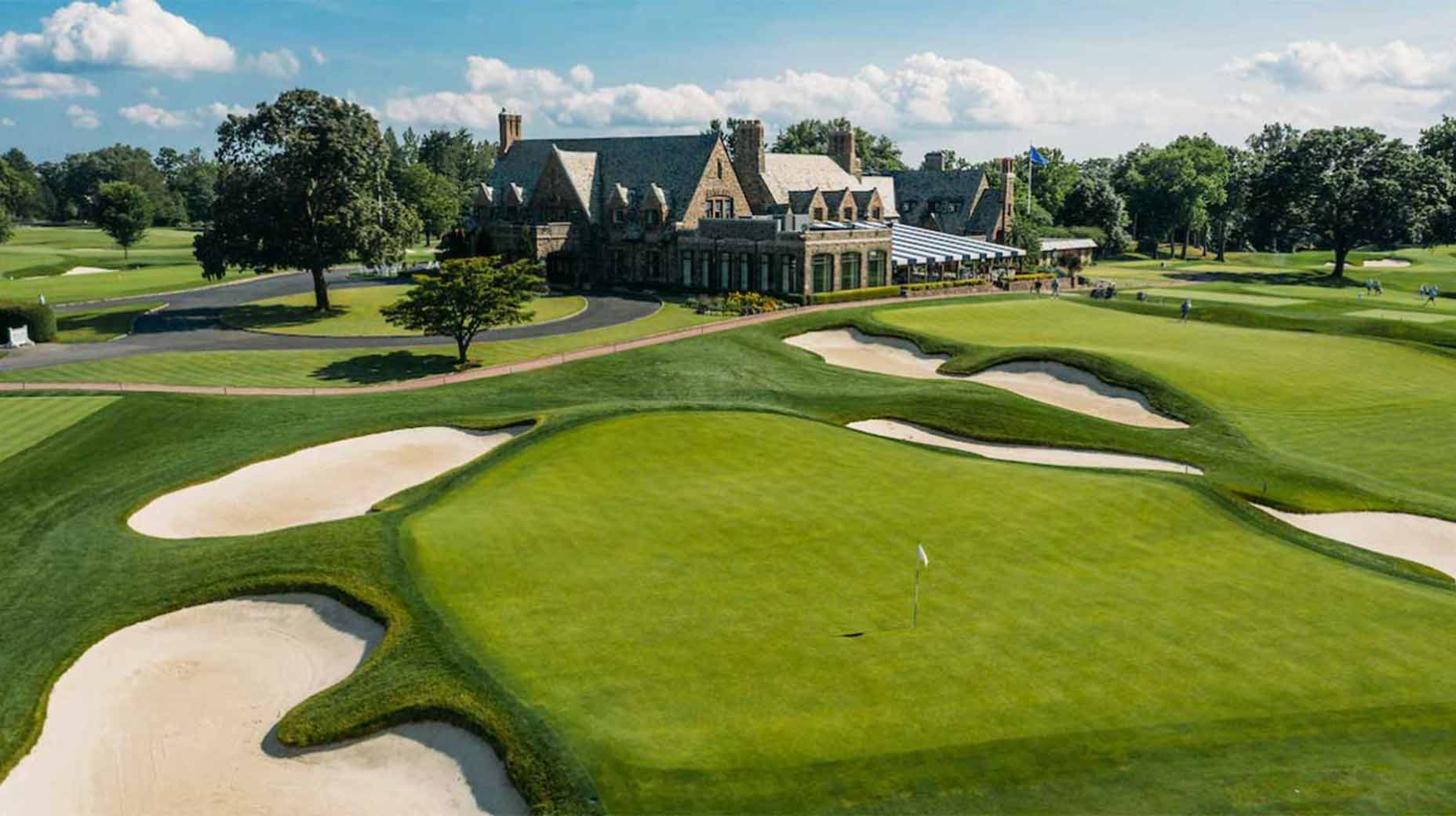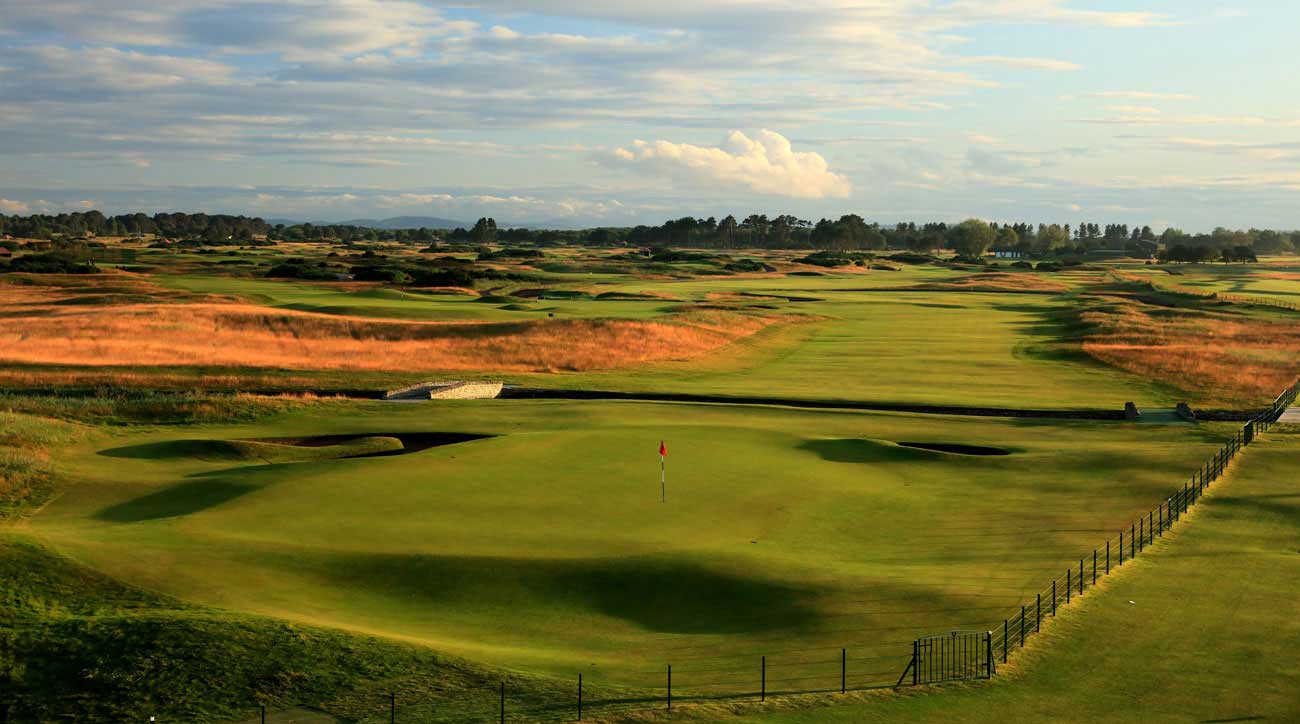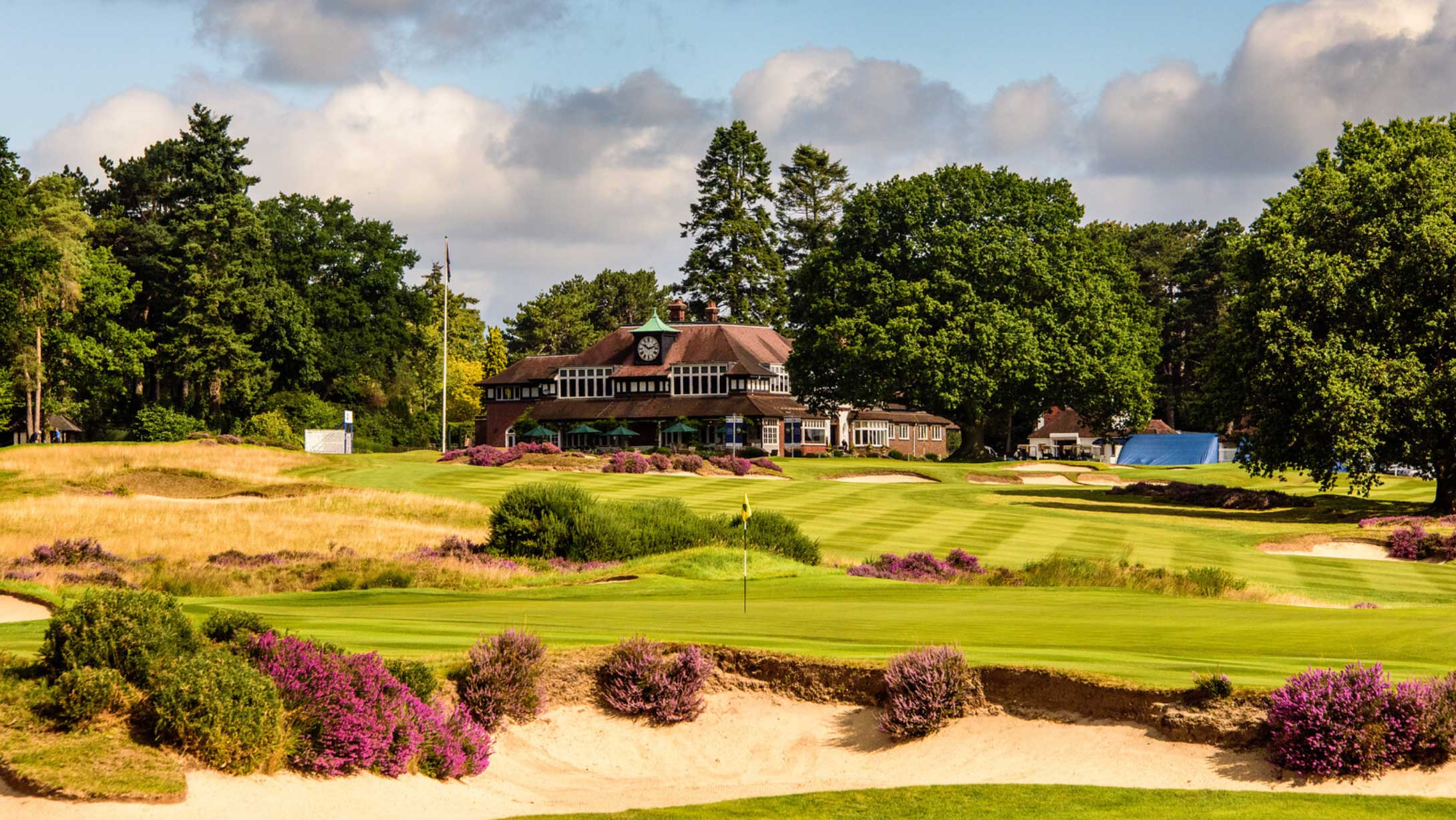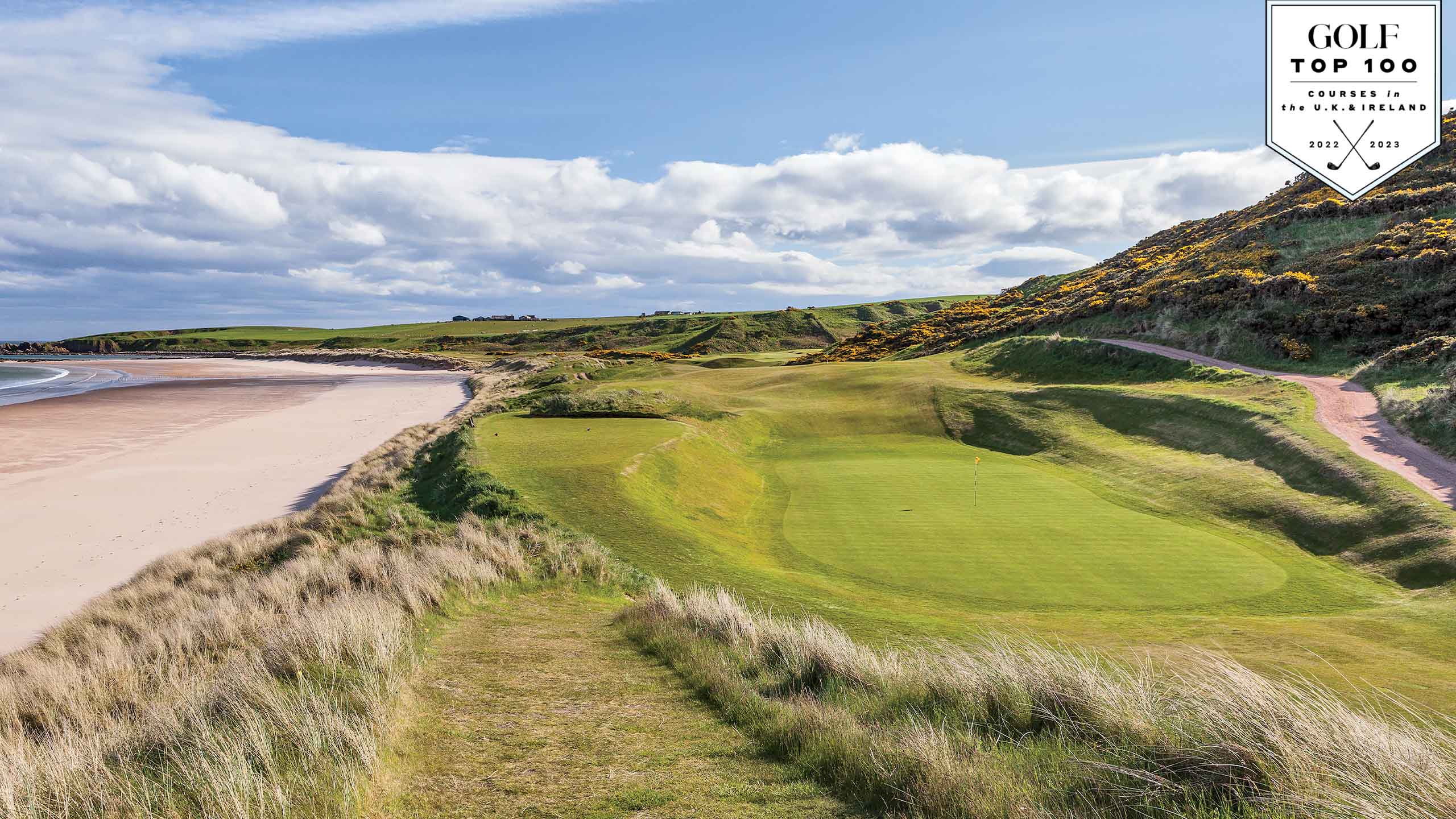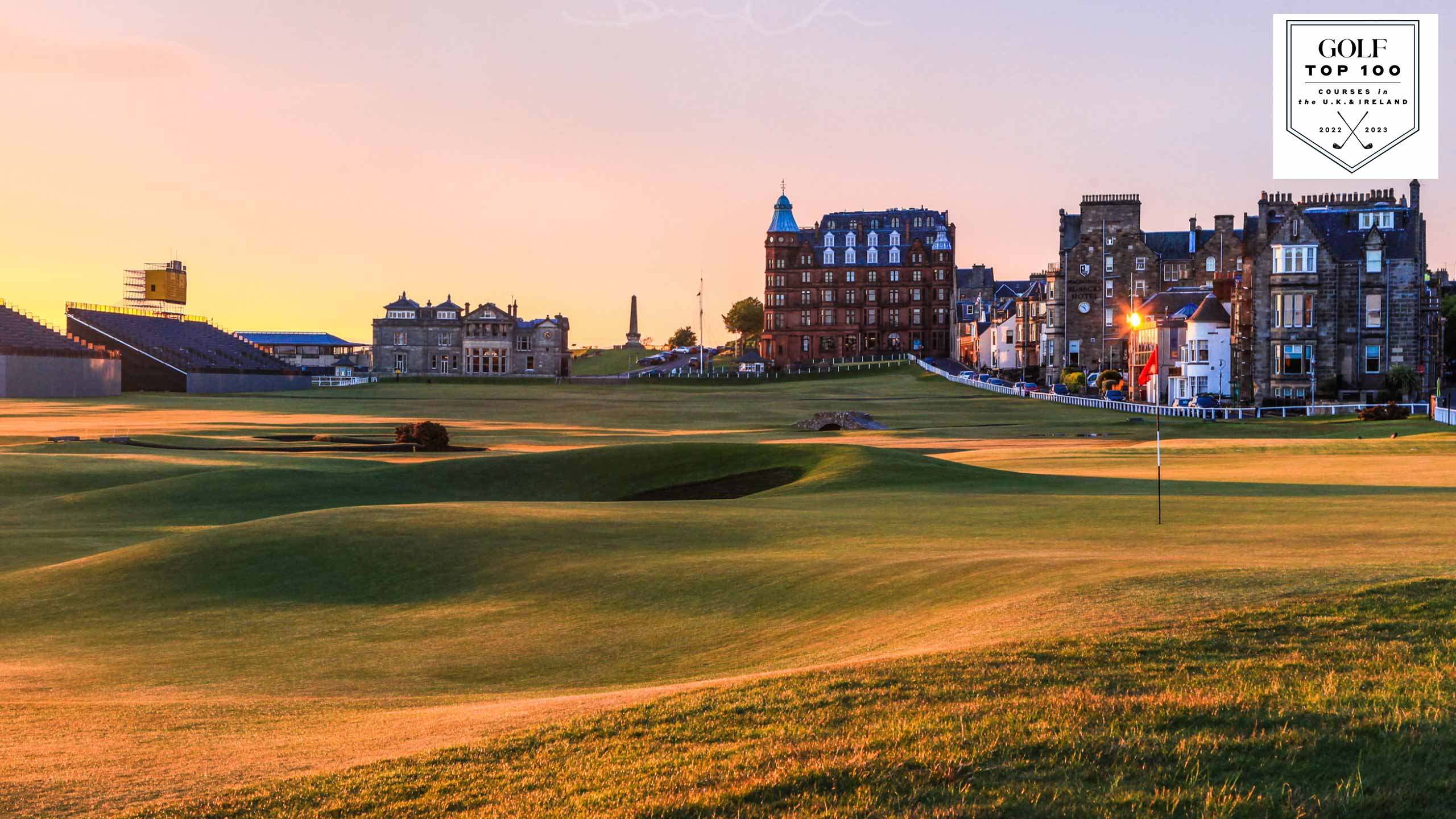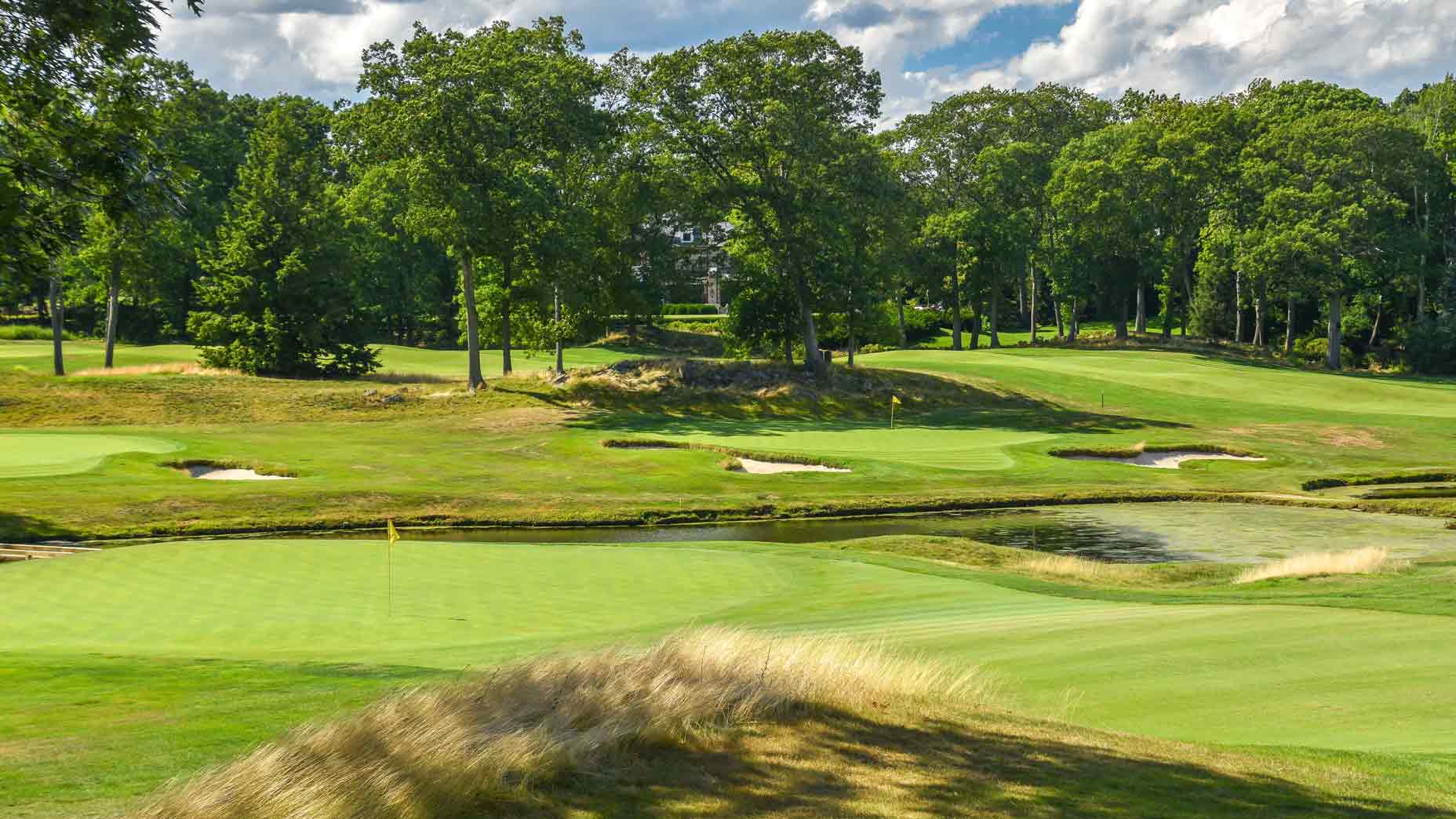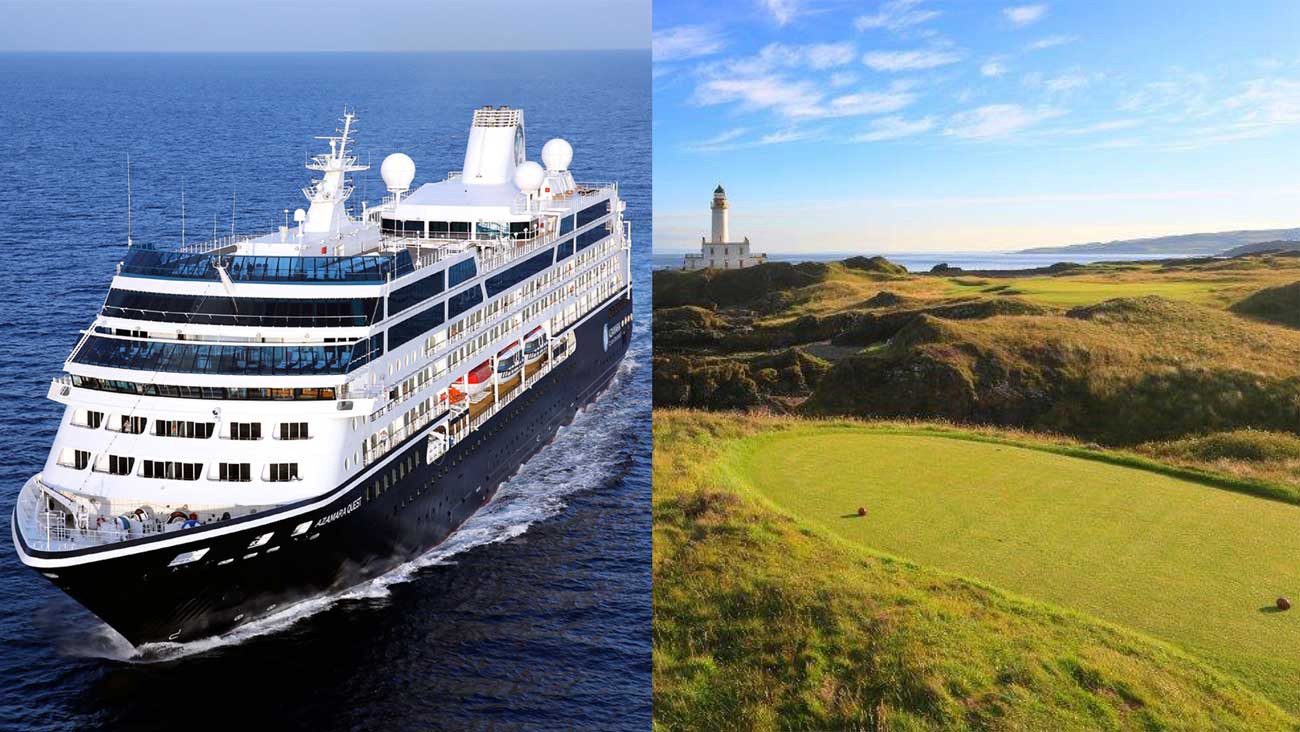Though the game itself can never be mastered, one thing is for sure: The most affordable way to pursue our sport is by playing municipal golf courses. For that reason, none of our course rankings is, arguably, more important than this one, the first such compilation of munis ever put together by GOLF.
Every player around the globe would be welcome at these 30 courses and could play them without taking out a home equity loan. Like at St. Andrews, the ultimate town-owned course, the heart of the game beats at these bastions of inclusiveness. That’s why we’ve been celebrating them every week in our long-running Muni Mondays series on GOLF.com. Whether you’re a clerk or a CEO, everyone is treated the same at a muni. Indeed, lost on lots of golfers is this truth: Municipal golf is the form of the game that most closely adheres to the perfectly unfussy U.K. model — change your shoes in the car park, say a quick hello in the pro shop, pay a reasonable fee and off you go, maybe with a trolley in tow.
Accessibility and affordability do not have to equate to indifferent architecture, though. Big-name designers like Donald Ross, A.W. Tillinghast and Jack Nicklaus feature prominently on this list, so know you’re in good hands.
The egalitarian camaraderie that pervades a muni is impossible to beat. The common denominator (other than, in some cases, the grit to do an all-nighter in your car in order to grab a tee time) is the passion to play. There’s something thrilling about seeing Bethpage Black in our No. 1 spot. The course has brought happiness — and a little heartache — to literally millions of golfers over the decades.
From the first munis, like Franklin Park, in Boston, and Van Cortlandt Park, in New York City, city- and county-owned playing fields have come a long way. We salute those communities that realize the vital role they serve in our quality of life. Do we hope this list (which will be expanded next go-round) will inspire municipalities to reinvest in their courses? You bet we do. In the meantime, the tee box is yours.
Methodology: How we rate courses
More GOLF rankings: Top 100 in the U.S. | Top 100 in the World | Top 100 You Can Play
Know a great muni that belongs on this list? Make your case here!
Course summaries below by GOLF.com staff and Tom Mackin.
1. Bethpage Black
Farmingdale, N.Y.
A.W. Tillinghast, 1936
Fees: $130–$150, nonresidents; $65–$75, NY State residents
The Black intimidates golfers with a sign at the 1st tee that recommends the course “only for highly skilled golfers.” Among the highly skilled? Tiger Woods, who won the 2002 “People’s Open,” as that U.S. Open came to be known. Woods was the only golfer to break par for 72 holes, owing to rugged, uphill par-4s, massive bunkers and the wrist-fracturing rough found on this Rees Jones-restored A.W. Tillinghast layout. The Black is one of the great routings, highlighted by the masterful way Tillinghast placed the fairways and greens from the 2nd hole in a valley all the way through the dogleg left 9th. The par-5 4th and its iconic cross-bunkering is a world-beater.

2. Chambers Bay
University Place, Wash.
Robert Trent Jones, 2007
Fees: Varied green fees, with on-demand tee-time pricing
Robert Jones Jr., with the on-site help of Bruce Charlton and Jay Blasi, created a superb addition to the Pacific Northwest landscape. Previously, the best-known courses in the area featured soaring fir and other distinctive hardwoods. Chambers Bay brought scale and width to the region, with stunning long views in all directions. The stretch from 13 through 17 is the stuff of dreams with its requirements alternating between power and finesse. Recently regrassed, the firm playing conditions allow the design to play as well as it photographs.
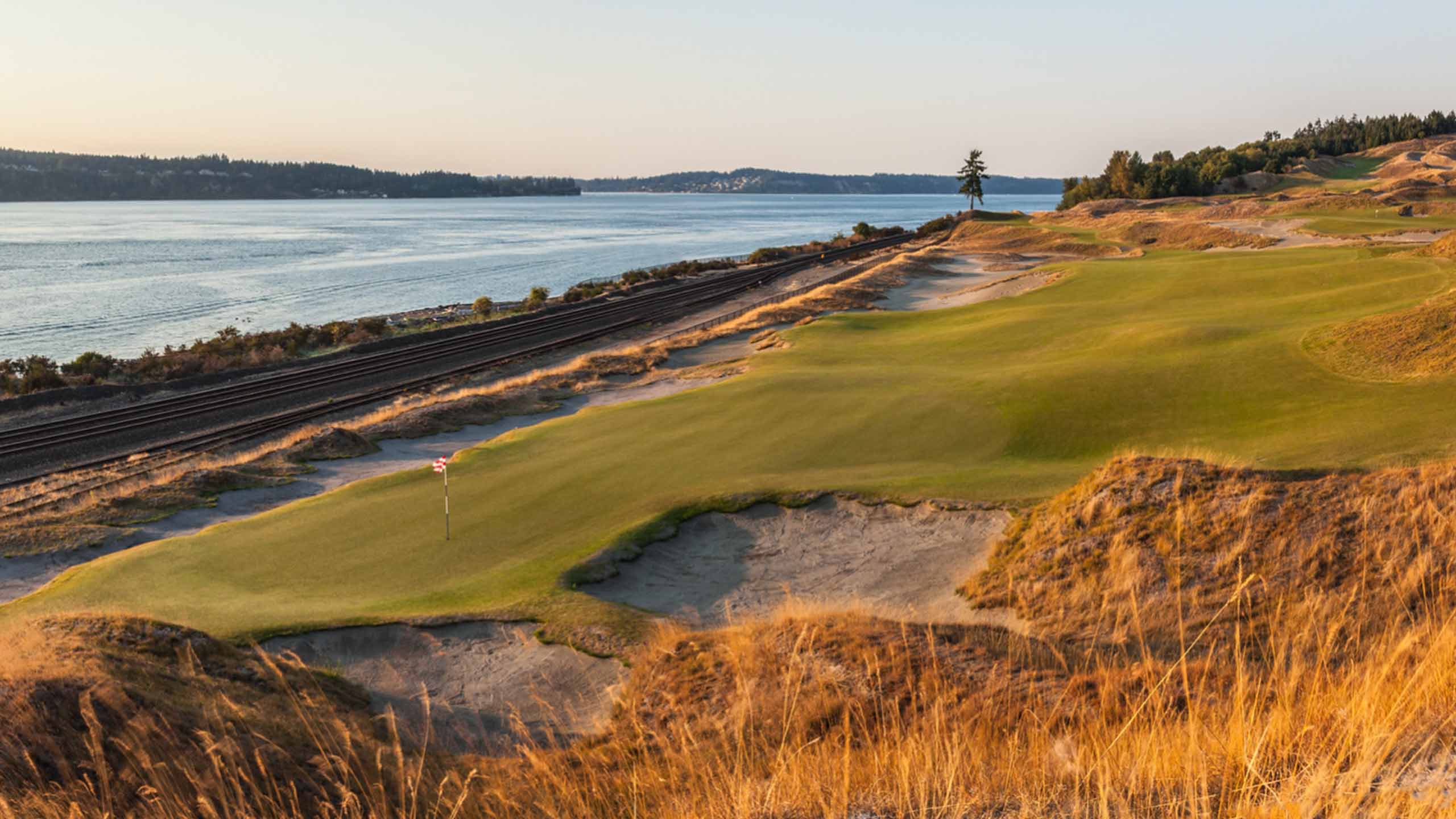
3. George Wright
Hyde Park, Mass.
Donald Ross, 1938
Fees: $50–$57, nonresidents; $41–$50, Boston residents
A WPA project in the late 1930s, this course thankfully came deep in Ross’s career, because it is hard to fathom that he would have had the ability to design so many outstanding holes on this rocky site if he had just arrived from Scotland where all he knew was sandy soil. Fast-forward 35-plus years, though, and Ross and his team, led by Walter Hatch, had developed the skill set to employ dynamite to render holes that make the site look as if it was always meant for golf. Standout stretches of par-4s include 5 though 7, as well as 10 through 12. With no weak links, this municipal course is better than most of the private courses in golf-rich Massachusetts.

4. Bethpage Red
Farmingdale, N.Y.
A.W. Tillinghast, 1935
Fees: $86–$96, nonresidents; $43–$48, NY State residents
The Black Course casts such a long, daunting shadow, it’s amazing any grass can grow on its four sibling courses at Bethpage State Park. But it does, especially on the Red Course, which more than holds its own, albeit with much less fanfare than its fellow A.W. Tillinghast design. There’s no warning sign at the 1st tee like at the Black, the rough is friendlier and the bunkers less dramatic (except for the fistful that split the fairway on the par-4 13th). But locals know none of that makes the Red a pushover. You’ll get the message right away with the uphill approach on the opener, followed by a series of doglegs, both sharp and soft, that will force you to hit every club — and shot — in your bag.
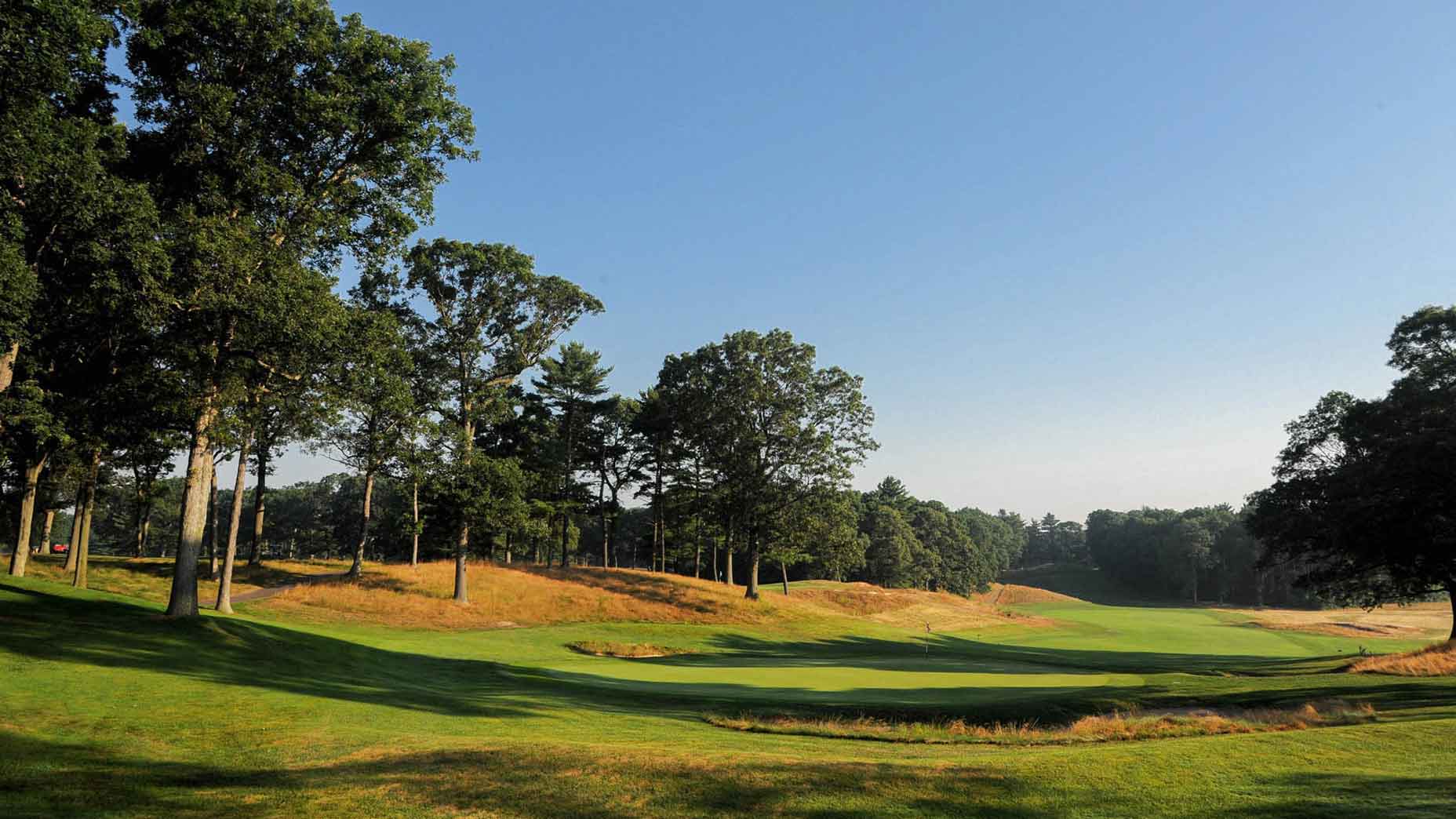
5. Torrey Pines (South)
La Jolla, Calif.
William Bell, 1957; Rees Jones, 2001/2019
Fees: $202–$252, nonresidents; $63–$78 San Diego City residents
Can it be 13 years since Tiger won the U.S. Open here on a broken leg in a playoff against Rocco Mediate? The calendar says yes. It’s unlikely that such high drama will take place again this June when the national championship returns to this cliff-lined stretch of San Diego coast, but you never know. The course has changed slightly since 2008: a handful of new championship tees have been added, the 4th fairway has been moved closer to a bluff overlooking the Pacific and the 15th fairway has been widened. The rough is as juicy as ever, and the pond in front of the 18th green has a magnetic effect on poorly played approaches.

6. Trump Golf Links at Ferry Point
Bronx, N.Y.
Jack Nicklaus, 2015
Fees: $197–$227, nonresidents; $154–$185, NY City residents
Firm, undulating turf. Wind hard off the water. Fairways dotted with fescue-covered mounds. There are moments on Trump Golf Links at Ferry Point where you’d swear you’re on the coast of Ireland. But then you look up and see the Whitestone Bridge and magnificent New York City skyline, and you remember that you’re bombing drives on a former waste dumping ground in the Bronx. Dubbed by some “The Chambers Bay of the East,” this Jack Nicklaus charmer is one of golf’s great reclamation projects and the first course built in New York City since the 1960s. It was worth the wait. (Nicklaus Design and GOLF.com are affiliates of 8AM Golf.)
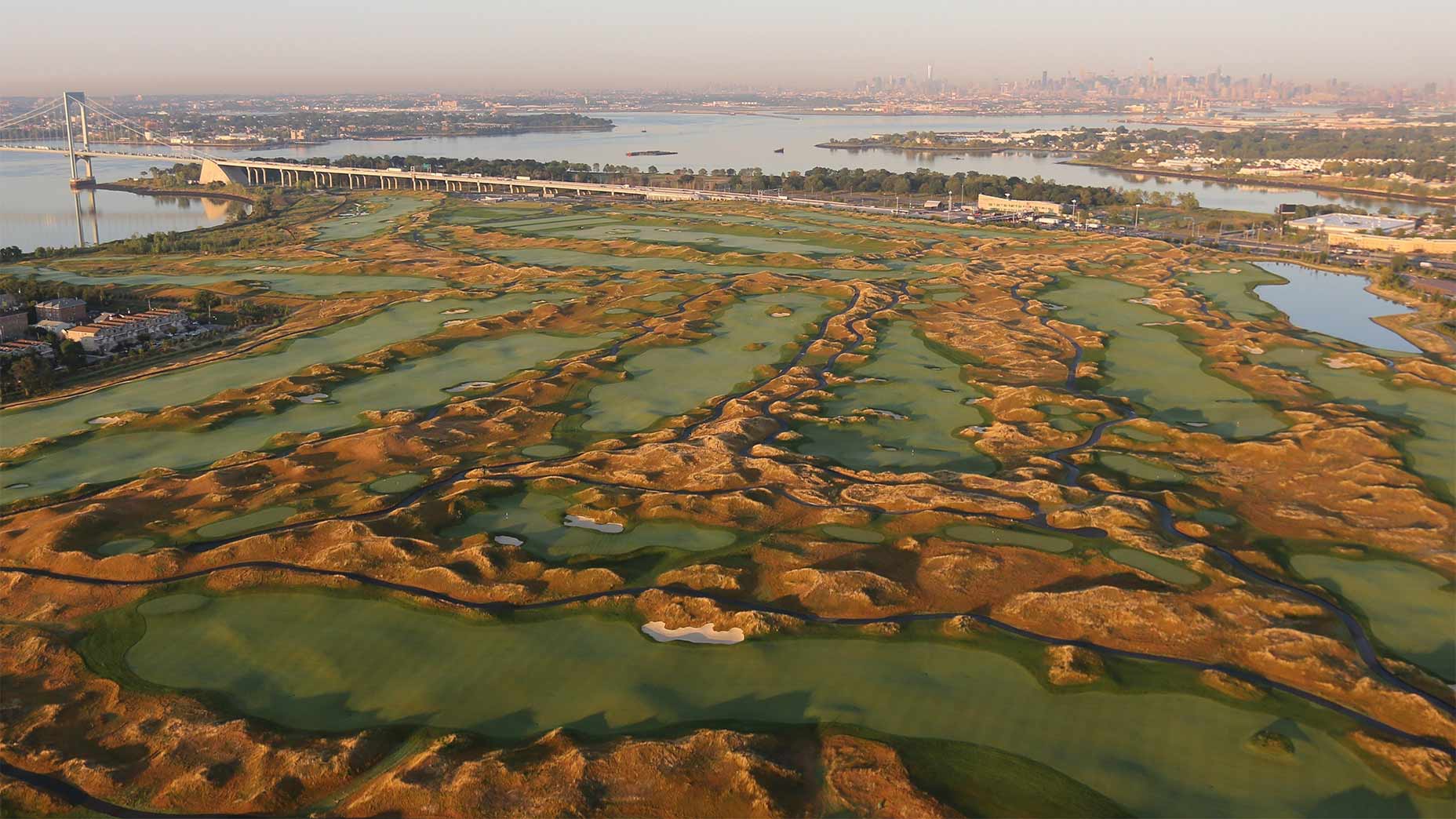
7. Memorial Park
Houston, Tex.
John Bredmus, 1936; Tom Doak, 2019
Fees: $120–$140, nonresidents; $30–$38, Houston residents
Another Tom Doak restoration project that nods to golf’s past while embracing its future. The original John Bredemus layout opened in 1936 and hosted the Houston Open from 1951-63. In the years since, Memorial Park has been one of the busiest munis in the country, logging more than 60,000 rounds annually. Doak’s $18.5 million renovation -— with as assist from Brooks Koepka — improved irrigation and modernized the course, making it playable for the public and challenging for pros. The fairways are generous, and Doak left only 19 bunkers on the course. But his target-oriented design rewards precision, and the back nine is built for scoring swings and tournament drama. In 2020, Memorial Park became the first Doak course to play host to a PGA Tour event. But the rates remain muni-friendly, making this one of the best deals in golf.
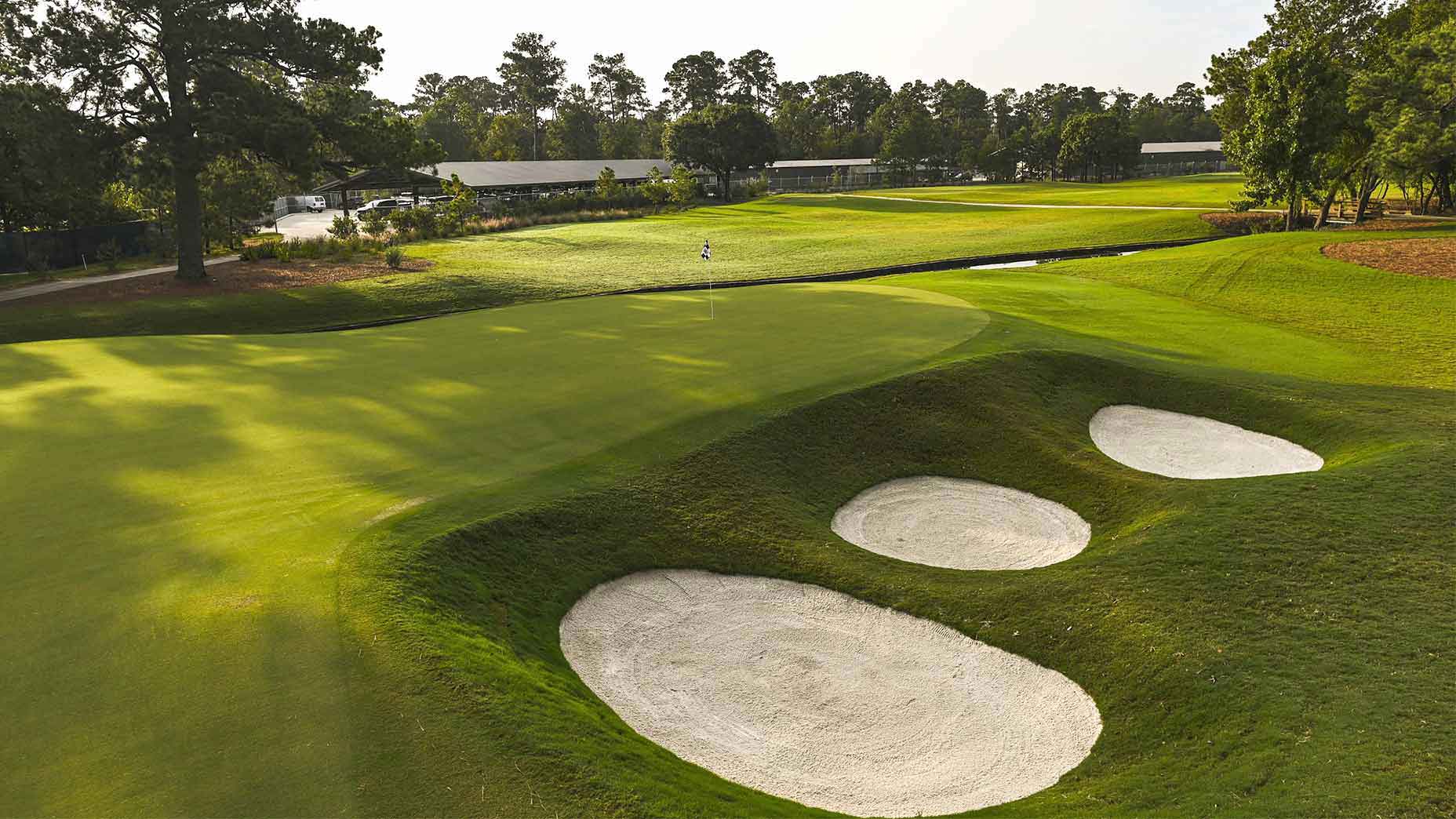
8. Buffalo Dunes
Garden City, Kans.
Frank Hummel, 1976
Fees: $25–$30, all golfers
For nearly five decades, this heartland links has owned the crown of Kansas’ best muni. But it hasn’t rested on its laurels. Thanks to a team of budget-minded restoration pros, including Buffalo Dunes’ own superintendent, the course is returning to its roots. The overhaul is still underway, but trees have been removed, greens and bunkers rebuilt, and parts of the sandy property regrassed to help reduce water bills. Sound costly? It would be, save for some smart and creative thinking from the project managers that has saved the city hundreds of thousands of dollars.

9. Piñon Hills
Farmington, N.M.
Ken Dye, 1989
Fees: $44–$49, nonresidents; $37–$42, San Juan County residents
The northwest corner of New Mexico might be a surprising location for one of the country’s best muni courses, but that’s where you will find Piñon Hills. Elevated tees and generous fairways are surrounded by a mesmerizing High Desert landscape dotted with Piñon and Juniper trees, plus some cool sandstone rock formations like the one behind the green (but in play) at the par-3 6th. The toughest holes end each nine: the par-5 9th plays almost 600 yards from the tips with a fairway bisected twice by arroyos, and the par-4 closer is a dogleg right that usually plays into the wind. Three ponds come into play on four holes, while the multi-tiered greens, many with three distinct sections, can befuddle even the best putters.
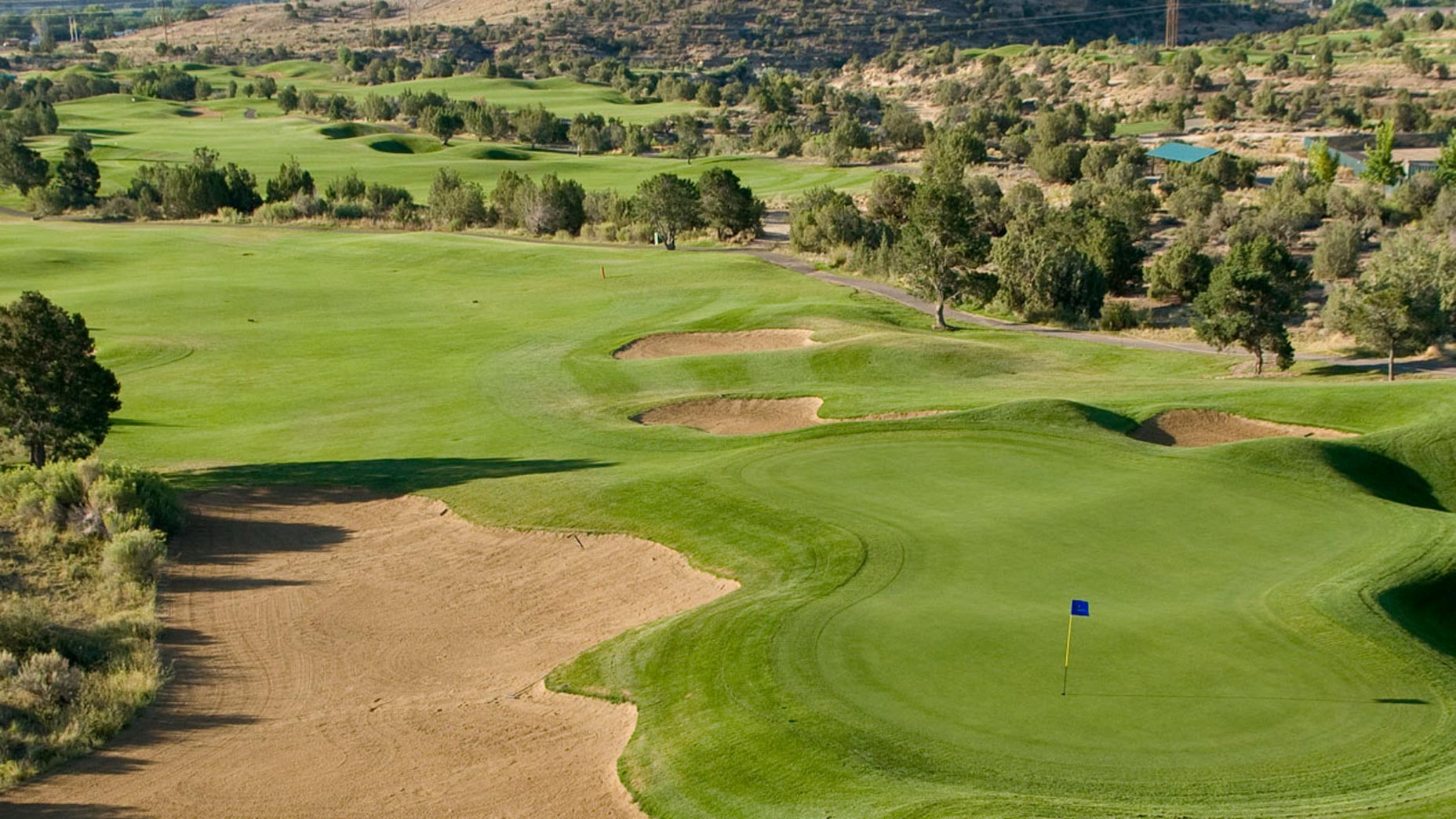
10. Butterfield Trail
El Paso, Tex.
Tom Fazio, 2007
$33–$45, all golfers
West Texas is known for high school football, but it also has something else worth rooting for: a Tom Fazio-designed muni that unfurls across a stunning desertscape. As recently as last summer, Butterfield Trail was in dire economic straits, but thanks to funding from a new investment group, the course — with wide fairways, sand dunes and framed by the mountains beyond — is thriving again. The layout sits just miles from El Paso International Airport, meaning airplanes frequently zoom overhead, but that’s a minor inconvenience when you consider that rates start at just $33 — with cart!

11. Gold Mountain (Olympic)
Bremerton, Wash.
John Harbottle III, 1996
Fees: vary with on-demand tee-time pricing
Not much has changed since 2011 when then-17-year-old Jordan Spieth won the U.S. Junior Amateur here — because why mess with a good thing? Elevation changes produce challenging lies on wide fairways lined by 100-foot fir and cedar trees. The greens have plenty of subtle breaks, and adjacent collection areas will test your short game. The course drains well (a handy trait in the Pacific Northwest), but there is permanent water on six holes. Only one hole — the signature par-3 16th — is all carry over the hazard. The reachable par-4 closer offers a huge risk/reward opportunity, with water up the right side to the green. The Seattle ferry docks only 15 minutes from the course.
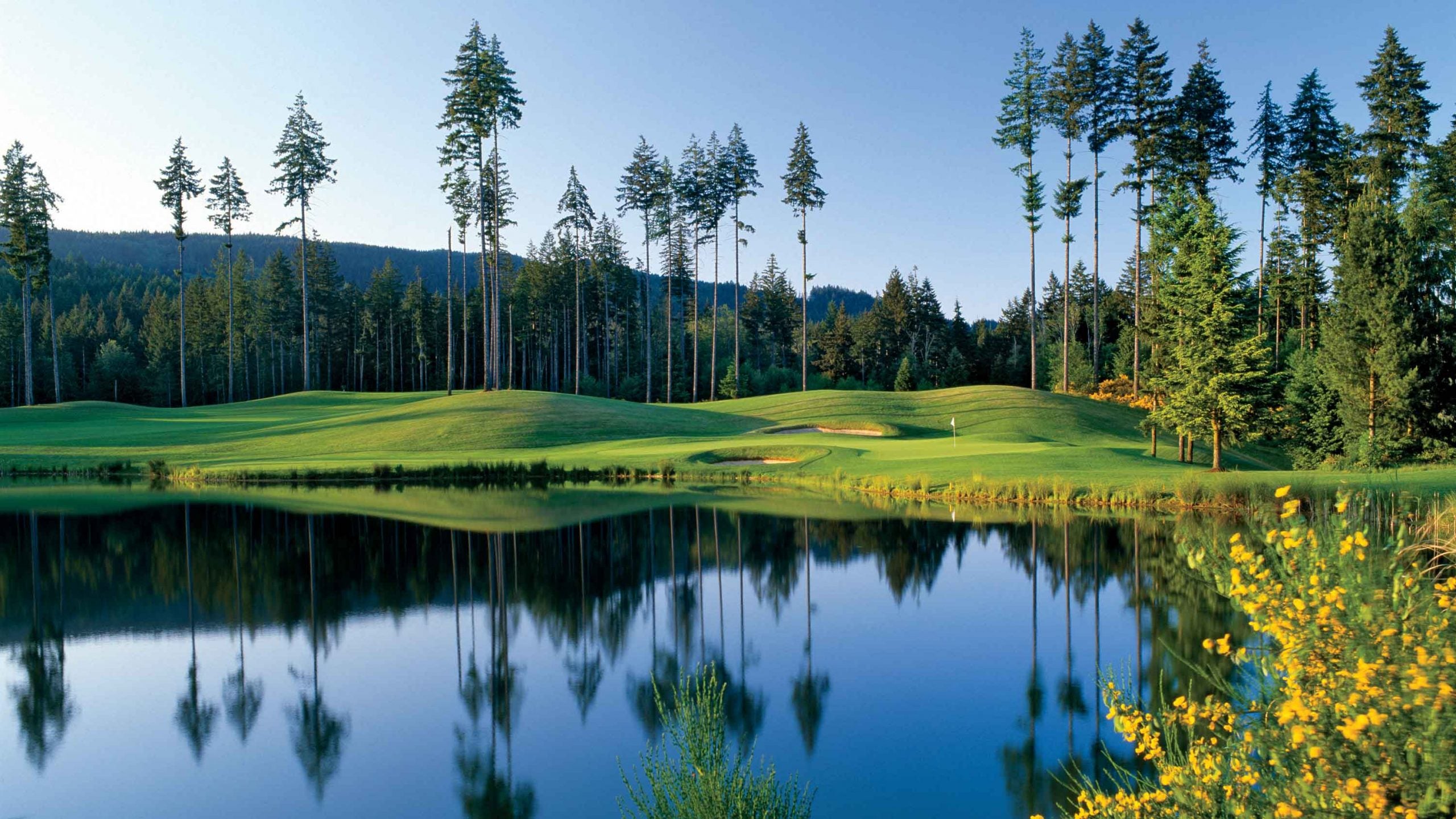
12. Corica Park (South)
Alameda, Calif.
Rees Jones, 2018
Fees: $54–$84, nonresidents; $42–$52, Alameda residents
This well-used muni (named for the former mayor of Alameda) was transformed in 2018 during a massive renovation where tons of sand from a BART tunnel project were used to raise the grounds considerably, enhancing irrigation and improving course conditions. Tree removal brought even more wind off San Francisco Bay into play, especially during the afternoons, but openings to greens encourage the ground game. The scorecard ticks off all the boxes on the course-architecture menu: a short par-3 (the 5th at 133 yards), drivable par-4 (the 297-yard 8th) and some meaty par-5s (notably the 15th and 17th).
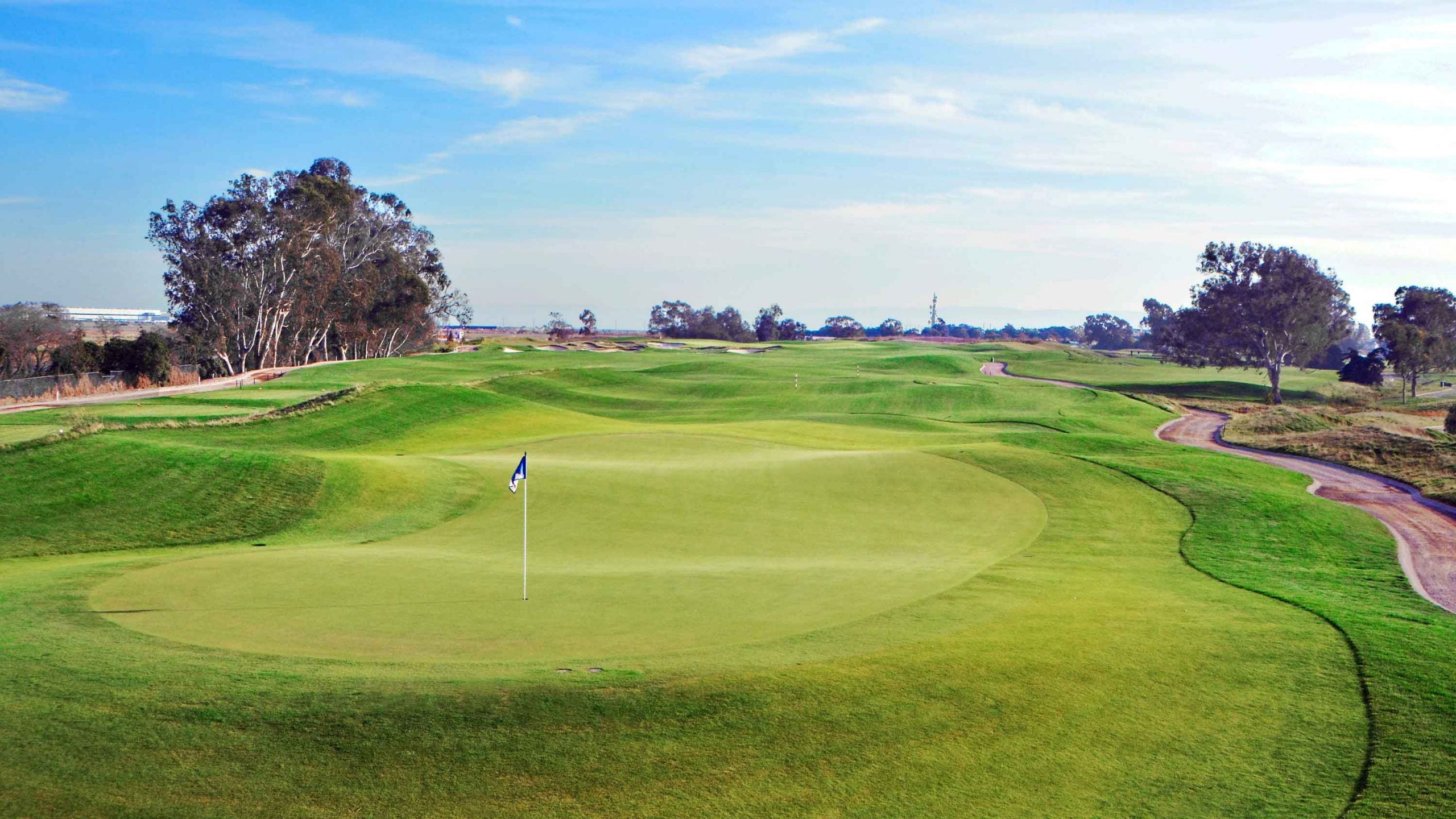
13. Sleepy Hollow
Brecksville, Ohio
Stanley Thompson, 1924
Fees: $34–$44, all golfers
Tee times: book here
While most of his design work can be found in his native Canada, Stanley Thompson crossed the border into the U.S. more than a few times. That was fortunate for Cleveland-area residents who enjoy his work here at Sleepy Hollow, 30 minutes from downtown. Thompson’s original and sharply contoured greens remain (except for the rebuilt 8th, where slopes were too steep) so it’s much better to have an uphill 15-footer than a downhill 5-footer. Surrounded by Brecksville Reservation, the heavily wooded layout has elevation change — both nines start with a downhill hole and eventually return uphill to the clubhouse — but it’s the long par-3 2nd (235 yards from the tips) and the 11th (one of the tougher and most scenic par-4s) that get the most attention.
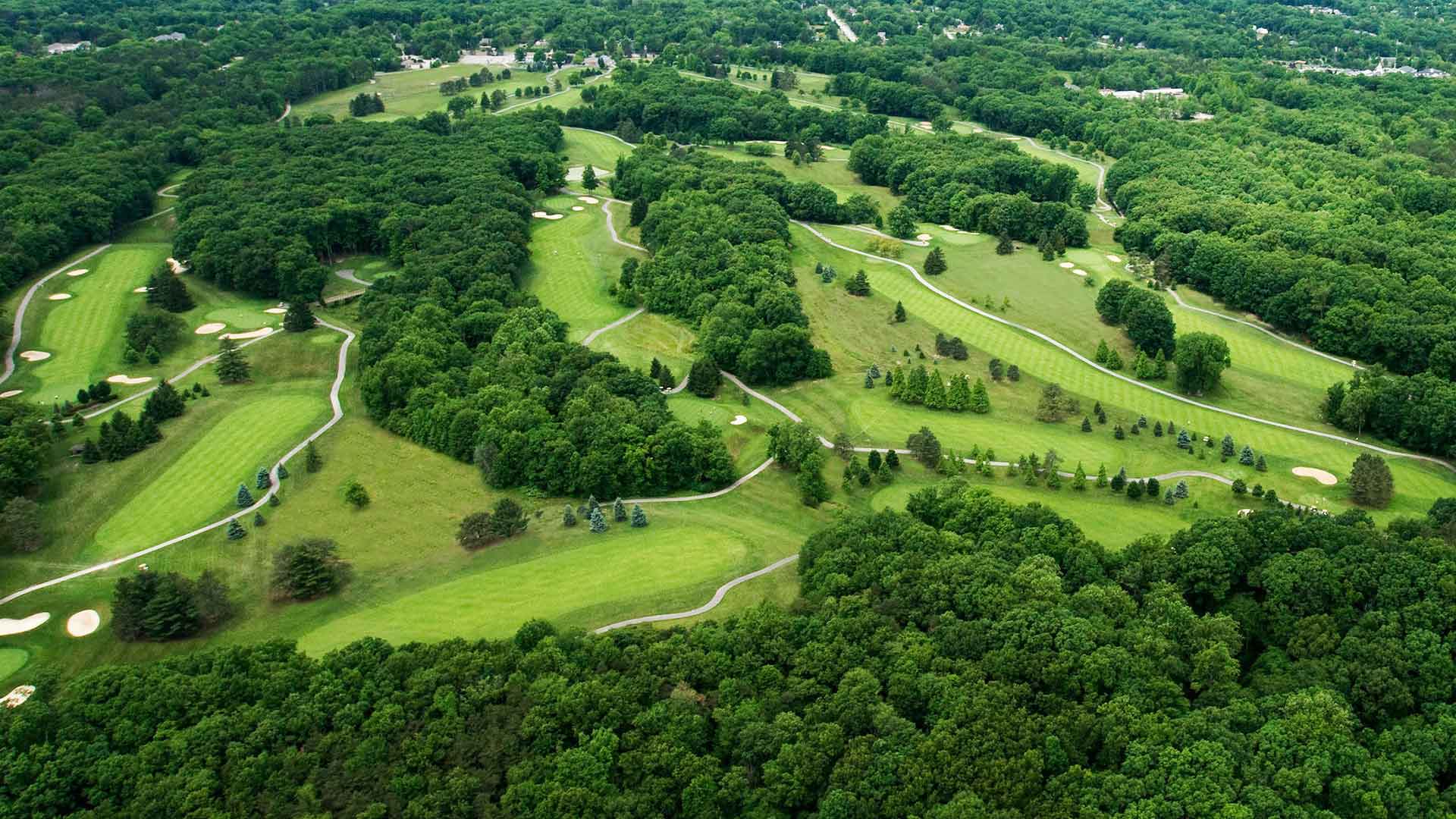
14. Keney Park
Windsor, Conn.
Devereux Emmet, 1927; Robert Ross, 1931; Matt Dusenberry, 2016
Fees: $42–$44, nonresidents; $32.50–$34.50, Hartford, Wethersfield and Windsor residents
A three-year, $9 million renovation completed in 2016 transformed this course in the 1,000-acre Keney Park just north of downtown Hartford. That project infused the small number of bunkers with a bit of style, most notably the church pew-style hazard on the par-4 8th. At just 6,449 yards, the essentially flat design is walkable with five outstanding par 3s, highlighted by the 152-yard 6th and its three-tiered green, and the beautiful 197-yard 18th. Missing fairways is rarely all that problematic, because trimmed-down rough means it’s tough to lose a ball. But locals will tell you the greens are as challenging as just about any in the state.
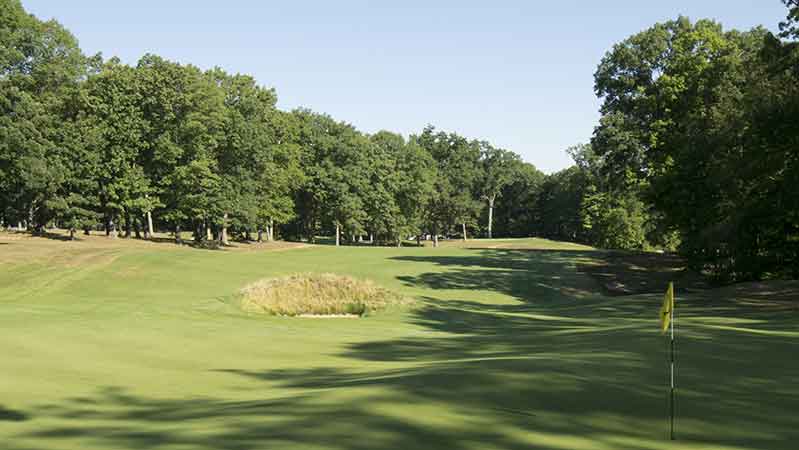
15. Papago
Phoenix, Ariz.
William Bell, 1963; William Fuller, 2008
Fees: $60–$180, nonresidents; $35–$60, Phoenix cardholders
Tee times: book here
This beloved design, just a short drive east of Phoenix Sky Harbor International Airport, debuted in 1963, but the present iteration might be its best ever. Home to the highly successful Arizona State men’s and women’s golf teams since 2018 (their state-of-the-art practice facility is on-site), this parkland-style course features generous fairways, large bunkers and sprawling greens. You’ll get a close-up look at the red-colored Buttes in adjacent Papago Park from the 2nd green, while other holes point you toward the downtown skyline. Par-4s are the strength of the course, particularly the dogleg-left 6th, well-bunkered 16th and long, dogleg-right 18th.

16. Brackenridge Park
San Antonio, Tex.
A.W. Tillinghast, 1916; John Colligan, 2008
Fees: $52-$62, nonmembers; $31-$41 members
The delightful “Brack” is a par-71 that’s short on yardage (just 6,243 yards from the tips) but long on history; it hosted the first Texas Open in 1922 and is home to the Texas Golf Hall of Fame. In 2008, architect John Colligan gave the course new life with a thorough restoration, including the return of Tillie’s reef bunkering. Pecan and oak trees line narrow fairways, but scoring is primarily achieved through smart approaches to moderately sloped greens (six of which are rectangular). The design includes a rare par-3 finisher: a 182-yarder fronted by a pond. It’s all just 10 minutes from both downtown San Antonio and the airport.
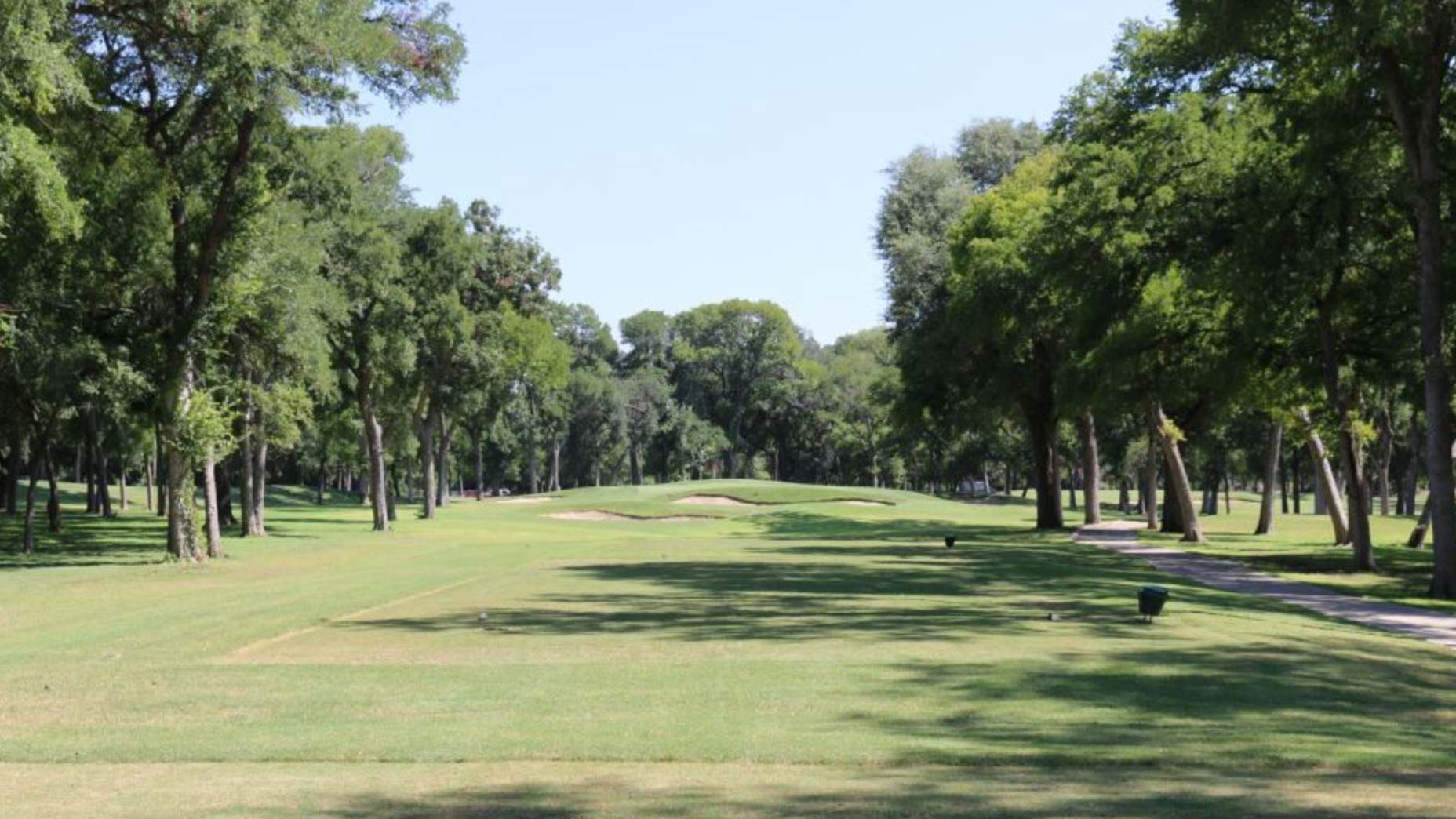
17. Montauk Downs
Montauk, N.Y.
Robert Trent Jones Sr., 1968; Rees Jones, 2003
Fees: $86-$96, nonresidents; $43-$48 N.Y. State residents
It’s a trek out to the eastern end of Long Island, and on the way you’ll pass by envy-inducing entrances to Shinnecock Hills, National Golf Links of America, Sebonack and Maidstone, but Montauk Downs is worth the trip. While the course isn’t set directly on the water, the Atlantic Ocean and Block Island Sound are close enough, which often means there’s a two- to three-club wind with which to contend. That makes hitting the well-bunkered, slightly elevated and quicker-than-you-think greens a challenge, especially at the par-3 12th, which plays into the prevailing wind across a valley. A few ponds come in play along the way (notably on par-5s at 7 and 13), and you won’t find much forgiveness for offline tee shots. Despite its remote location, Montauk hosted 48,000 rounds in 2020.
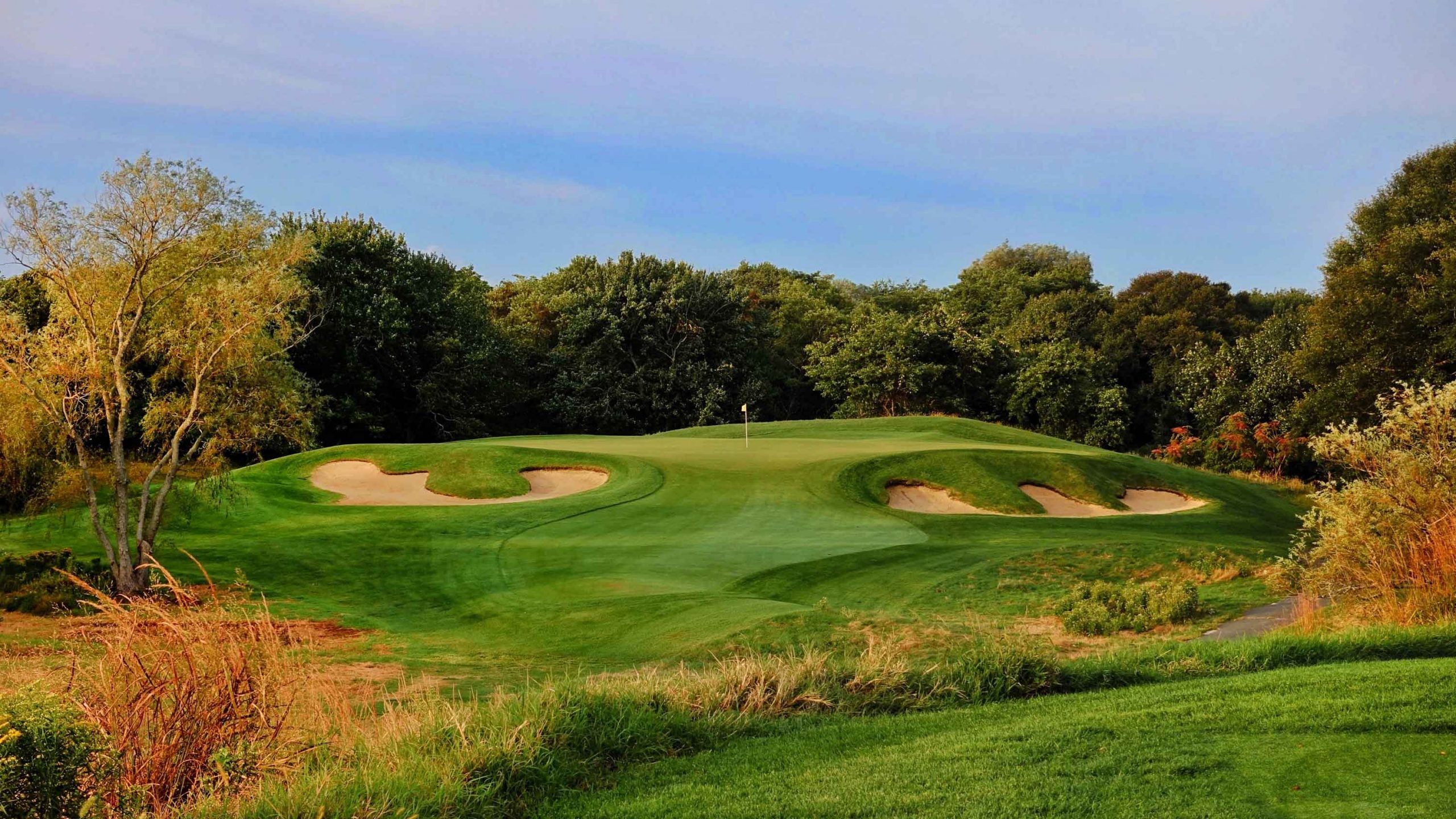
18. Torrey Pines (North)
La Jolla, Calif.
William Bell, 1957; Tom Weiskopf, 2016
Fees: $128-$160, nonresidents; $44-$58, San Diego City residents
The adjacent South Course — site of two U.S. Opens, including the 2021 edition — attracts more attention, but the North Course is more fun. It’s shorter, by more than 400 yards, and the rough is less penal (except around the annual PGA Tour event held each January, when the first two rounds are split between the two courses). During a 2017 renovation, Weiskopf flipped the nines (which means stunning Pacific views are part of holes 14, 15 and 16), livened up bunkers and enlarged greens. He also turned the 7th into one of his trademark short par-4s.
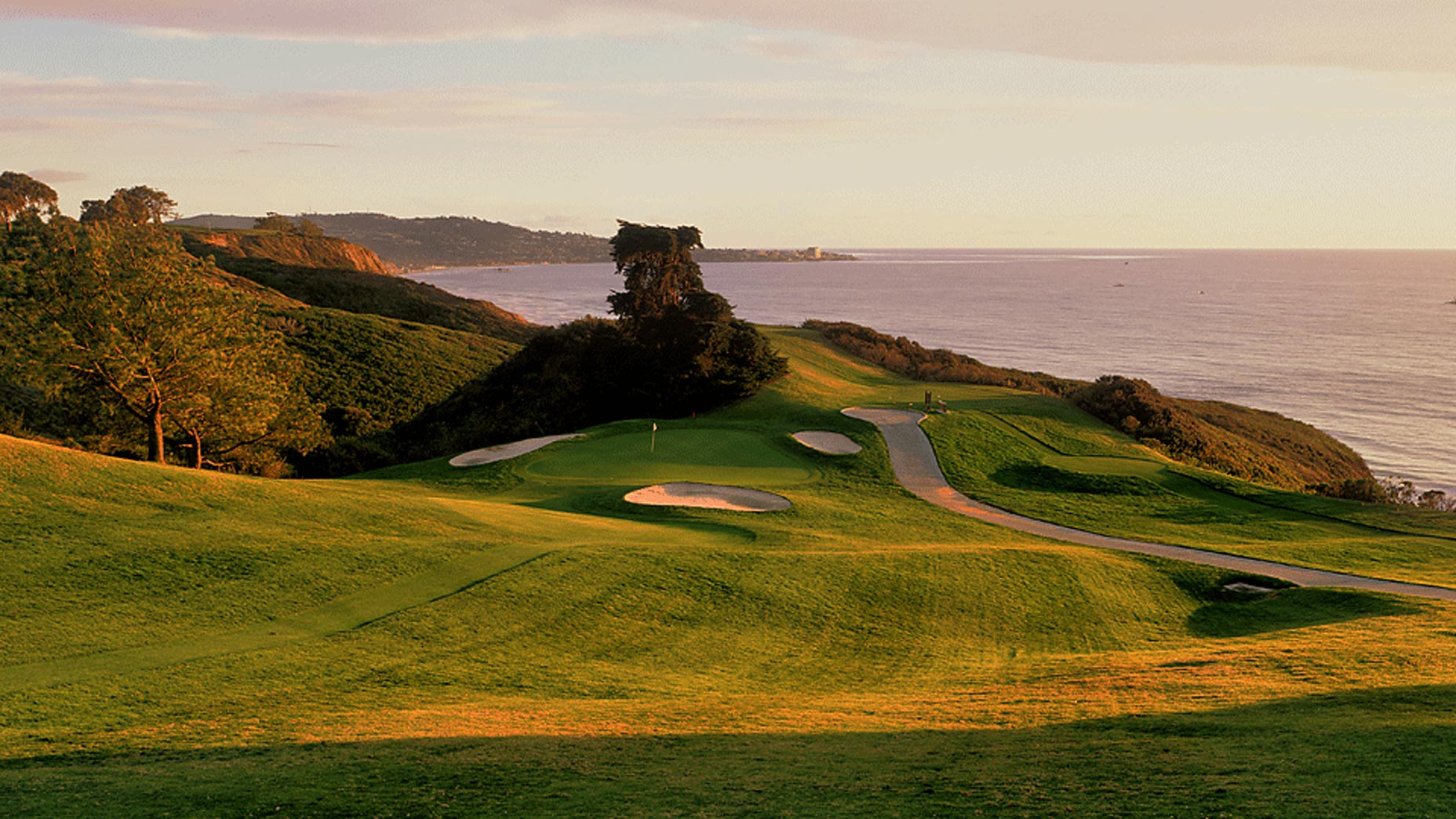
19. Charleston
Charleston, S.C.
Johnny Adams, 1929; Troy Miller, 2020
Fees: $60-$80, nonresidents; $20-45, Charleston residents
Known to locals simply as “The Muni,” this course got a new life last year thanks to Troy Miller’s highly regarded renovation. Miller paid homage to architect Seth Raynor (who designed the nearby Country Club of Charleston and Yeamans Hall Club) with grass-faced bunkers and memorable green complexes. The former were expanded with contours added to resemble famous templates, including the Redan, Punch Bowl, Biarritz, Road and Eden. The long views, especially on the back nine, are most attractive, but it is the strongly contoured greens that steal the show. With a location just 10 minutes from downtown, booking a tee time can be tougher than breaking par.
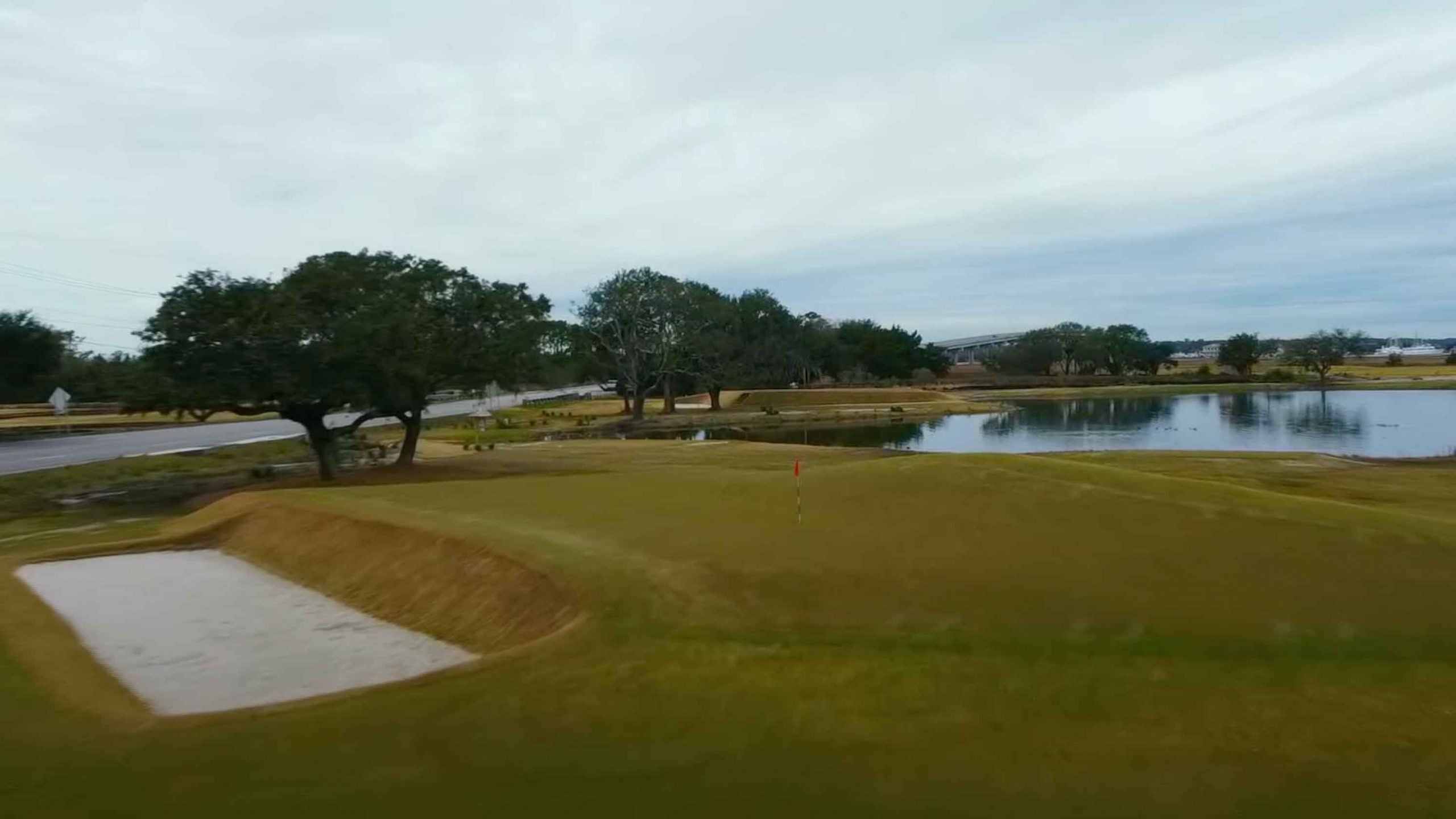
20. North Palm Beach
Palm Beach, Fla.
Seth Raynor, 1926; Jack Nicklaus, 2006/2019
Fees: $60-$140, all golfers
The Nicklaus team redid the original Seth Raynor design here in 2006, then came back in 2019 to regrass the course, reposition bunkers and soften the greens. You’ll encounter a surprising (for Florida) amount of elevation changes right away on the downhill 1st, while both the 9th and 18th play uphill to the clubhouse. Plenty of water comes into play, especially on the par-4 6th, which is along the Intracoastal Waterway. Patience is key to scoring well thanks to an omnipresent wind. The par-3s are stout, especially the 250-yard 15th that plays over water. (Nicklaus Design and GOLF.com are affiliates of 8AM Golf.)
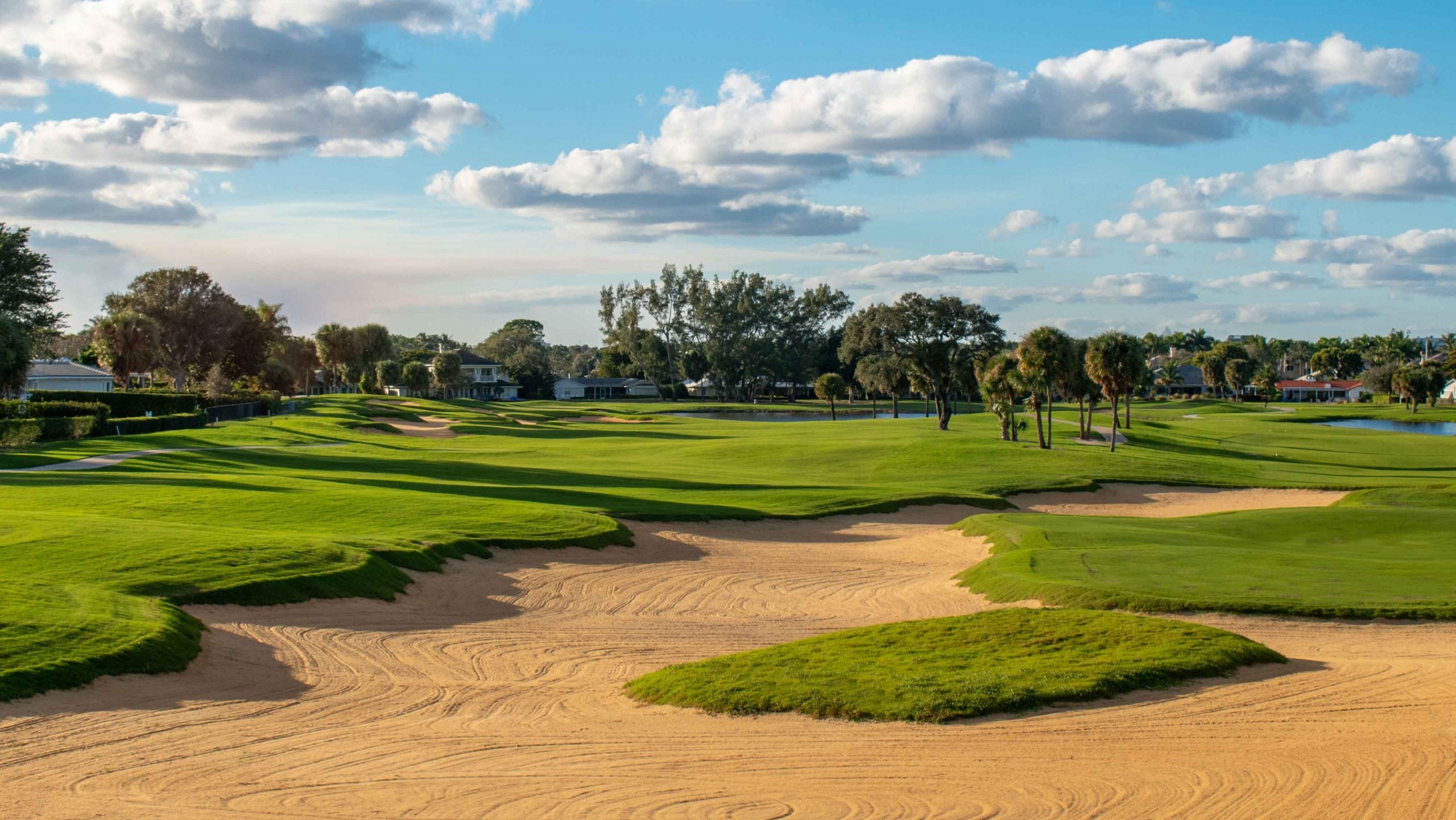
21. Wilmington
Wilmington, N.C.
Donald Ross, 1926
Fees: $37–$40, non-residents; $27–$30, New Hanover, Brunswick and Pender County residents
About two hours southeast of his much higher profile design at Pinehurst No. 2, Donald Ross created a more low-key but enjoyable muni. His original plans were used during a 2014 renovation to restore the greens back to their classic look and feel, including plenty of false fronts — but without the severe crowns found at No. 2. This walker’s paradise features a seamless routing with parallel holes. The front nine forms an outside loop that encircles the back nine. The course looks straightforward but is deceptively challenging. The four par-3s (including the bunker-less 4th with a two-tiered green perched on a hill) move in different directions, which means wind off the Atlantic Ocean, four miles to the east, always impacts club selection.
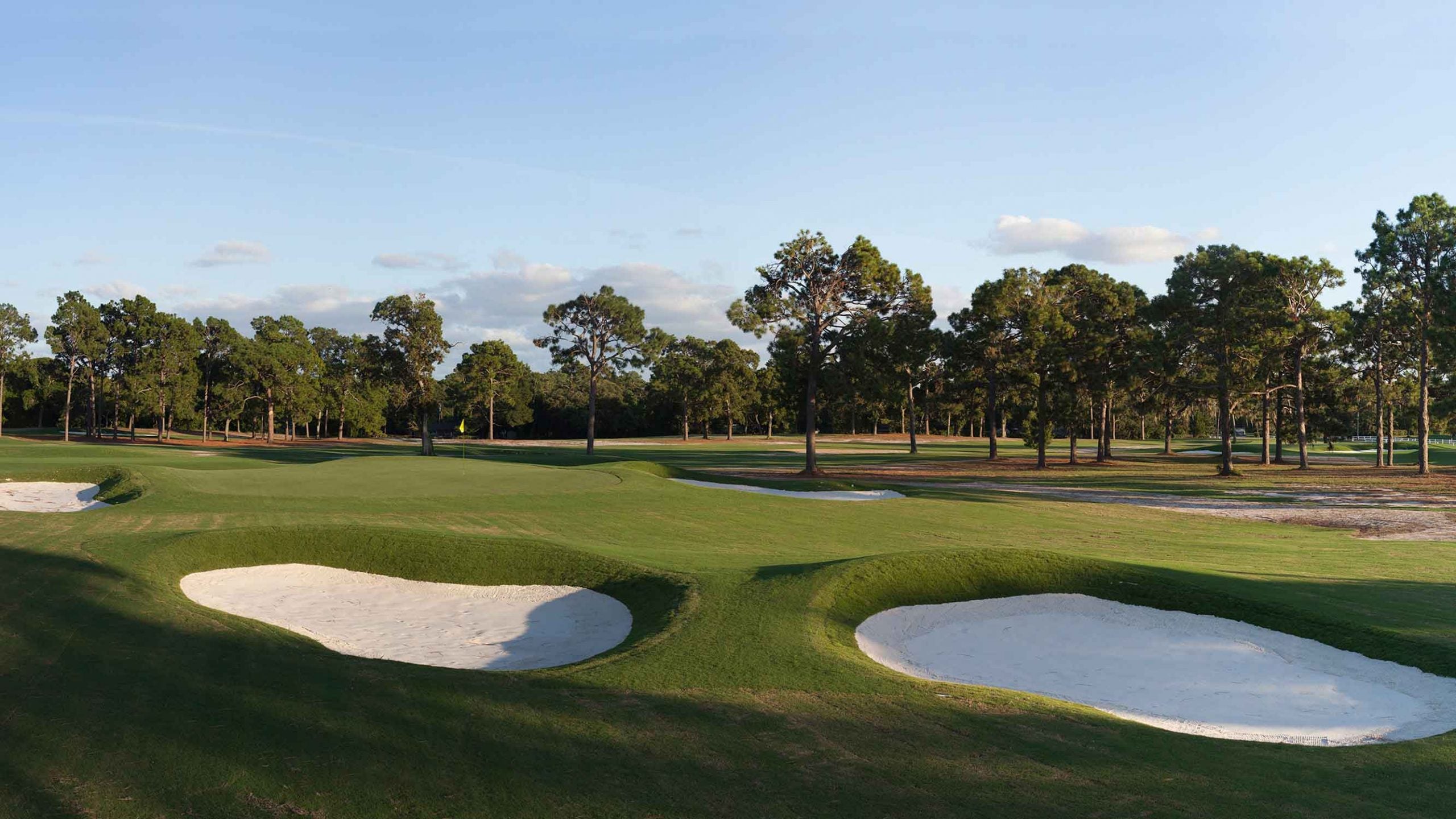
22. Triggs Memorial
Providence, R.I.
Donald Ross, 1932
Fees: $40–$46, nonresidents; $32–$37, Providence residents
Tee times: book here
From his summer office in Little Compton, R.I., Ross designed a number of courses in the state, but Triggs was his only public design. He started off with a demanding trio of par-4s to open up this 6,588-yard layout, followed by a slightly uphill 205-yard par-3. Things ease up slightly after that, and you can run the ball up on every green except the downhill par-3 14th. There are no tricks on this straightforward test, although the topography changes more frequently on the back nine, which commences with a downhill straightaway par-5. A creek comes in play on the par-4 11th and par-3 12th. Set on one of the city’s highest points, the course is usually buffeted by wind.
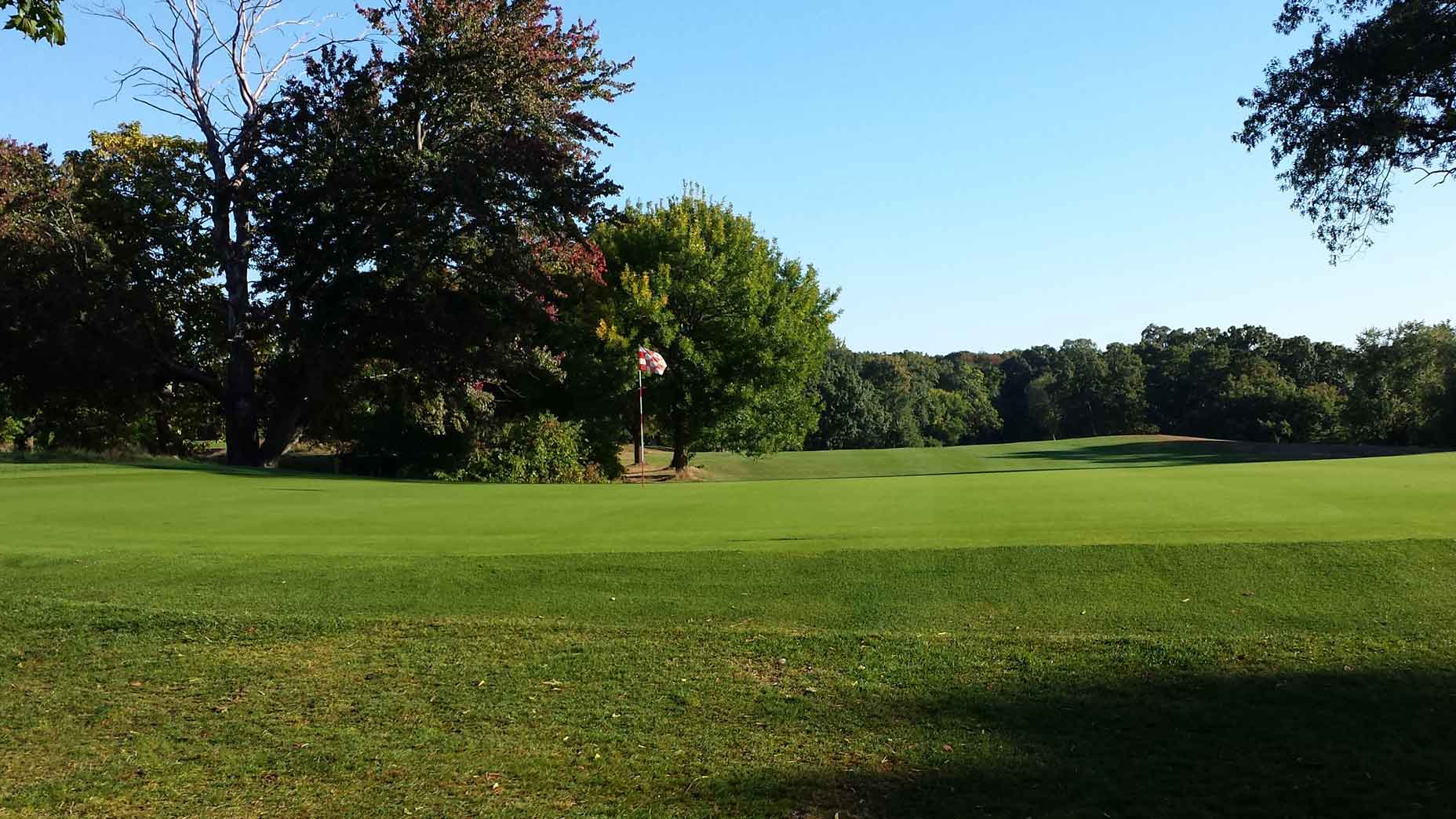
23. Indian Wells (Players)
Indian Wells, Calif.
John Fought, 2007
Fees: Varied green fees, with on-demand tee-time pricing
Tee times: book here
This is the tougher of two courses at this municipally-owned facility, but then the Players Course was built by a serious stick: John Fought, who won the 1977 U.S. Amateur and played on the PGA Tour. This lush design has wide landing areas, sprawling bunkers and large greens. Miss the putting surfaces and you’ll be tested with difficult up-and-downs. Survive the longer front side — home to three par-5s and a 469-yard par-4, where a barranca up the right side inhales misplayed shots — and you’ll likely get more birdie looks on the back nine, with the exception, perhaps, of the beefy par-4 18th.

24. TPC Harding Park
San Francisco, Calif.
Sam Whiting & William Watson, 1961; Chris Gray, 2003
Fees: Varied green fees, with on-demand tee-time pricing
Tee times: book here
Even if you can’t drive the green on the par-4 16th, like Collin Morikawa famously did during the final round of the 2020 PGA Championship, Harding Park remains a must-play. The course, which rubs shoulders with some elite private neighbors (The Olympic Club, Lake Merced, San Francisco Golf Club), was reborn in the early 2000s with an extensive renovation. Massive Cypress trees line the fairways, and you’d be hard-pressed to find a more difficult closing stretch in the Bay Area than 13 through 18 here. Go too far left on the closing hole or your ball will disappear into Lake Merced.
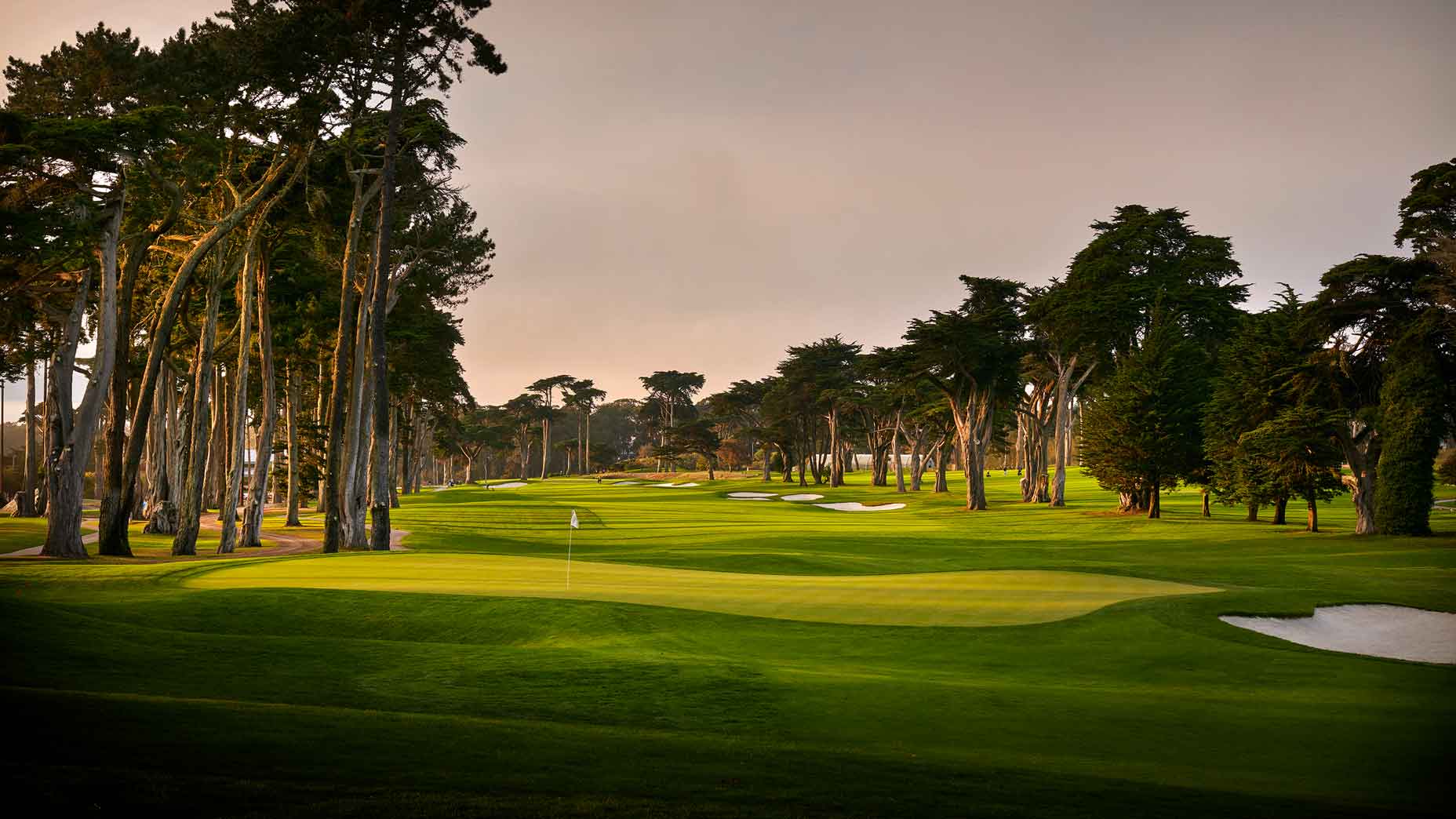
25. Wintonbury Hills
Bloomfield, Conn.
Pete Dye, 2005
Fees: $55–$65, nonresidents; $30–$40, Bloomfield residents
Tee times: book here
About 15 minutes northwest of Hartford sits a rare Pete Dye foray into New England. The bucolic setting must have had an effect on the irascible architect, because the diabolical nature of many of his other designs are not in play on this former dairy farm (pot bunkers are the sole exception). A linksy feel on the front is followed by more of a parkland vibe on the back. The best stretch on this 6,711-yard layout comes at 14, 15 and 16, a long and pretty trio of par-4s. The 455-yard 14th has a reservoir along the right side and a course logo-inspiring tree directly behind the green. The greens, although not overly sloped, are deceptive enough to test your green-reading skills.

26. Wailua
Lihue, Hawaii
Toyo Shirai, 1961
Fees: $48–$60, nonresidents; $15–$20, Hawaii residents
Among Kauai’s dazzling resort courses, you’ll find this scruffy but spry muni. From the driving range facing the Pacific Ocean to a design stellar enough to have played host to three U.S. Amateur Public Links Championships, Wailua exudes a laid-back atmosphere paired with some sneaky bite for those who don’t take it seriously enough. The par-3s are standouts: the 3rd is straightforward but plays 245 yards from the tips; large, deep bunkers guard the green at the 7th; the 14th plays hard into the wind; and the 17th is an Instagram star with ocean views. Nothing fancy here, just fun golf.
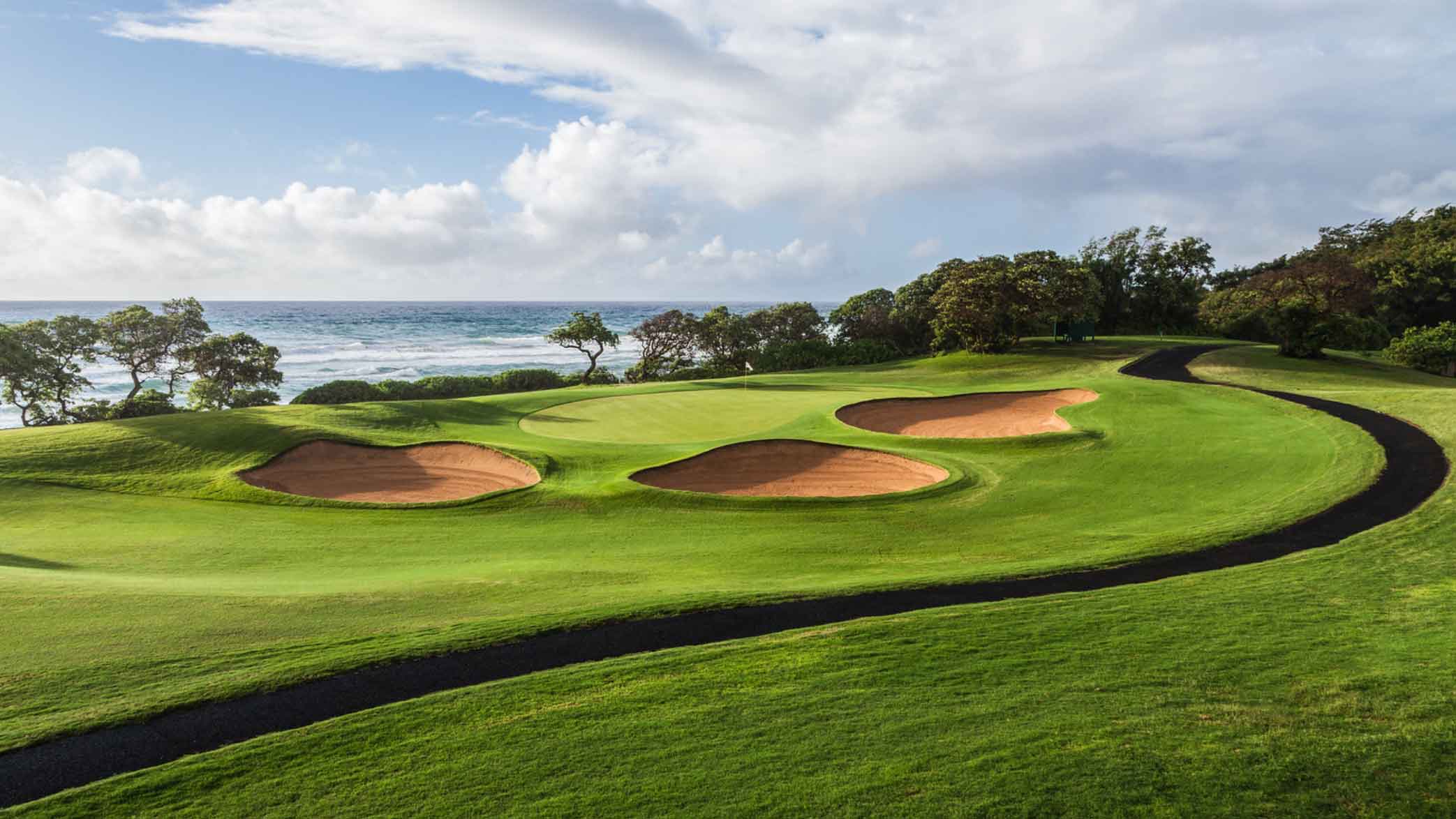
27. Manakiki
Willoughby, Ohio
Donald Ross, 1928
Fees: $34–$44, all golfers
Tee times: book here
Between this design and Sleepy Hollow, Cleveland-area public golfers are fortunate to have two top-shelf munis. On this layout 20 minutes east of downtown, you’ll find elevated tees on 10 and 18 (known as the “Canyon” holes) perched above fairways set in valleys bracketed by wooded hillsides. From there, approach shots play back up to elevated greens, where staying below the hole is a must. Another elevated tee awaits on the par-3 15th, which plays up to 200 yards to a slender green bordered by a creek on the right and a steep hillside to the left. The course derives its Native American name from the tall maple trees that line many fairways.

28. Harborside International (Port)
Chicago, Ill.
Dick Nugent, 1995
Fees: $65–$115, all golfers
Tee times: book here
A bunker renovation in 2017 is the only notable change to this course since it opened more than two decades ago. Credit to Illinois native and course architect, the late Dick Nugent, for authoring a distinctive layout that Ben Crenshaw once generously said reminded him of Muirfield in Scotland. The links vibe is indeed strong, largely because of the wind that blows of Lake Michigan, just a few miles west. A bunker that fronts the boomerang-shaped green on the par-3 15th is home to a huge grass-shaped anchor. (Won’t find that at Muirfield!) Water comes into play only on three holes, but it’s on the last three, so if you’re working on a new low score, proceed with care.

29. Palatka
Palatka, Fla.
Donald Ross, 1925
Fees: $22–$34, all golfers
Tee times: book here
This classic Donald Ross design is well off Florida’s beaten golf paths, about 45 minutes southwest of the World Golf Hall of Fame, in St. Augustine. At just 5,862 yards from the tips, with wide fairways and an absence of forced carries, it’s a pushover from the past, right? Wrong. This year’s winner of the prestigious Florida Azalea Amateur (played at Palatka since 1958) ended up just four under for three rounds. Contributing to the challenge are hilly landing areas, trademark Ross greens that are small in size and often crowned and deep greenside bunkers. Revitalized over the past decade by Florida-based course architect Bobby Weed and his team, this is a stop well worth making on the golf road less traveled.
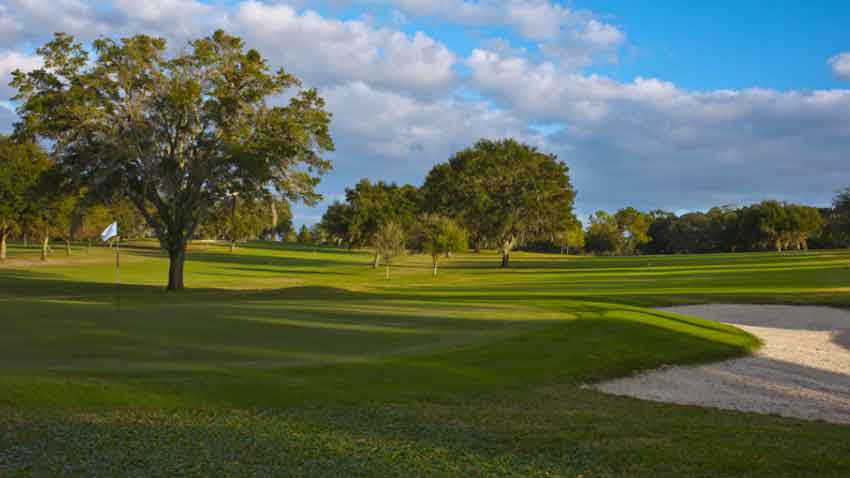
30. Highland Park
Birmingham, Ala.
Bob Barrett & Bob Cupp, 1998
Fees: $54–$65, all golfers
Tee times: book here
The oldest course in Alabama has roots on this site dating back to 1903, but the most recent renovation in 2020 lifted Highland Park to new heights thanks to new bunkers and greens. Don’t be fooled by the 5,800-yard, par-70 scorecard: elevation changes, creeks, lakes and plenty of movement on the small greens make the course play longer than you might think, while not robbing the design of any of its quirky fun. Three par-3s measure 136 yards or less, and for better players, there are a handful of drivable par-4s and reachable par-5s. A new back tee at the downhill par-4 15th sits on the property’s high point and provides a memorable view of the downtown skyline.

Know a great muni that belongs on this list? Make your case here!


